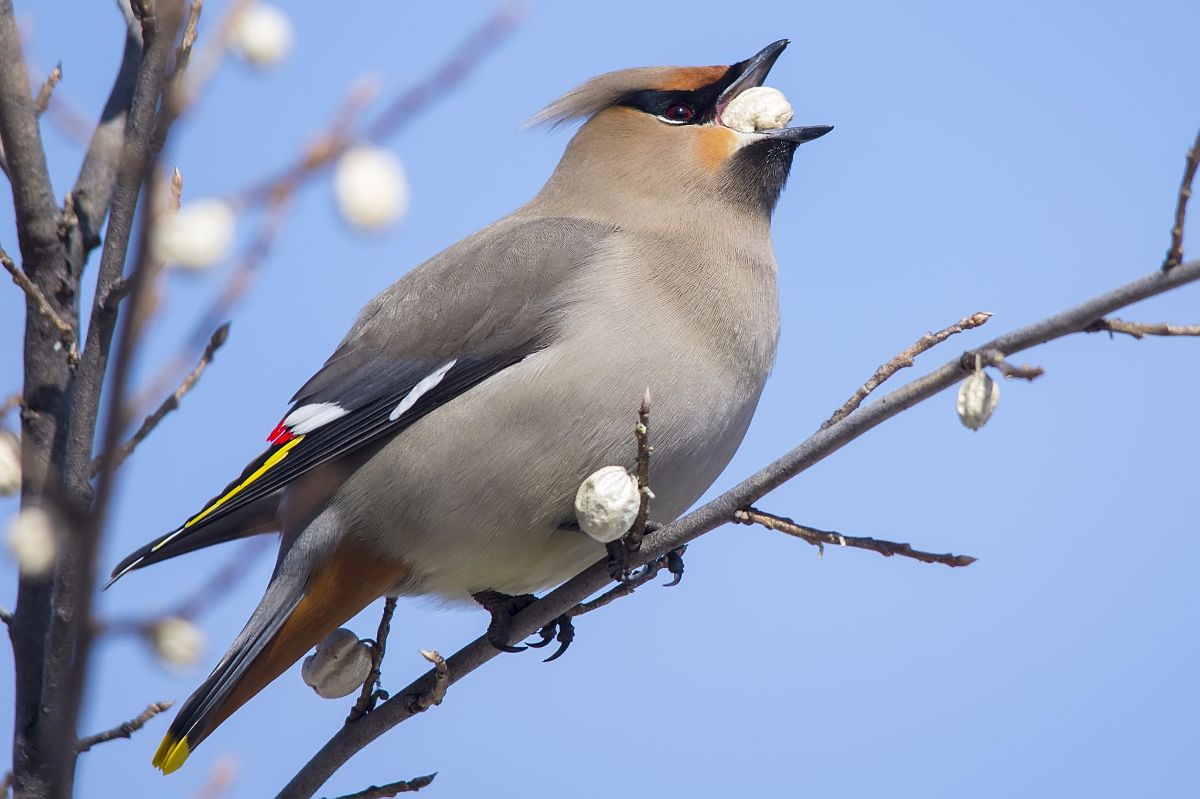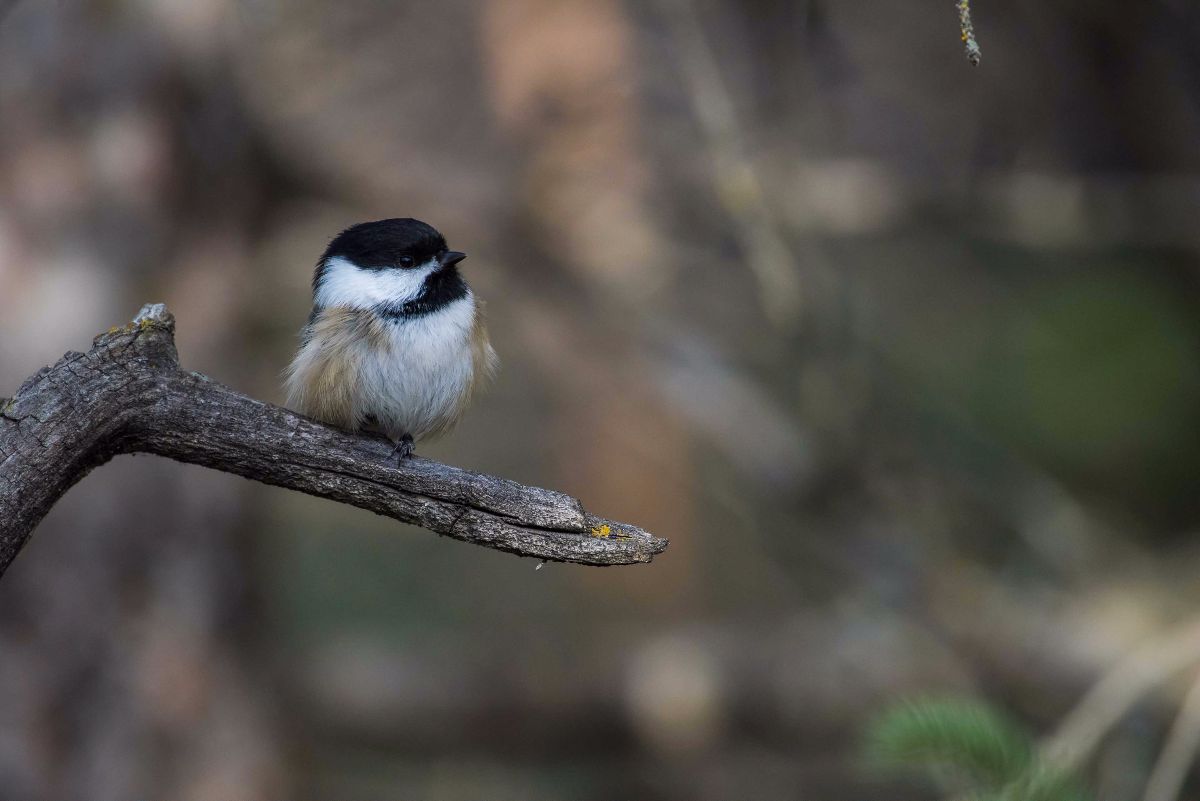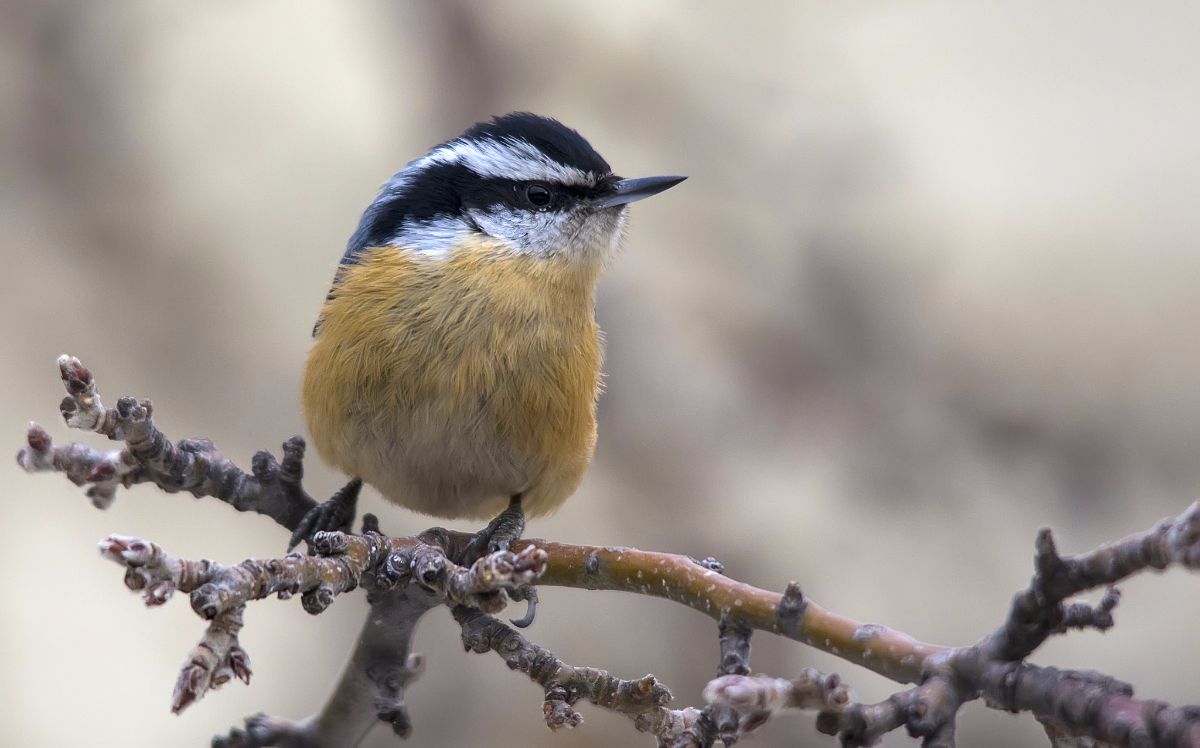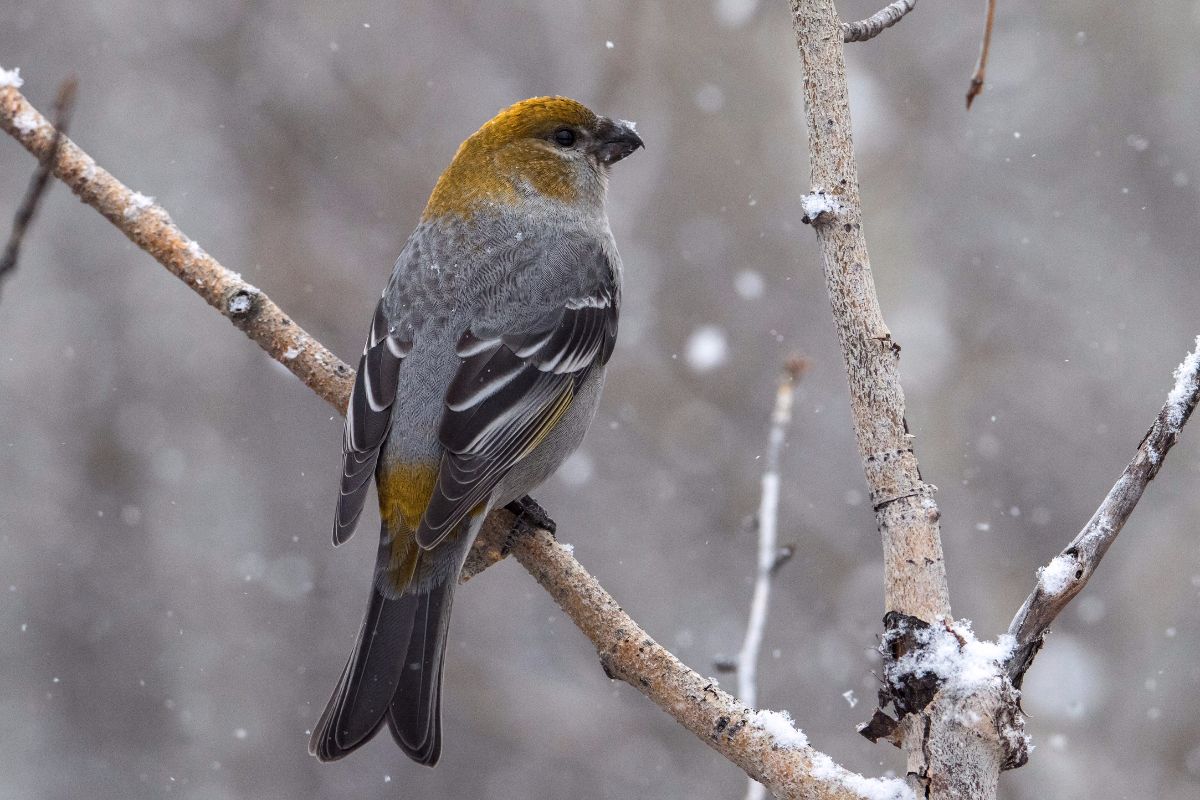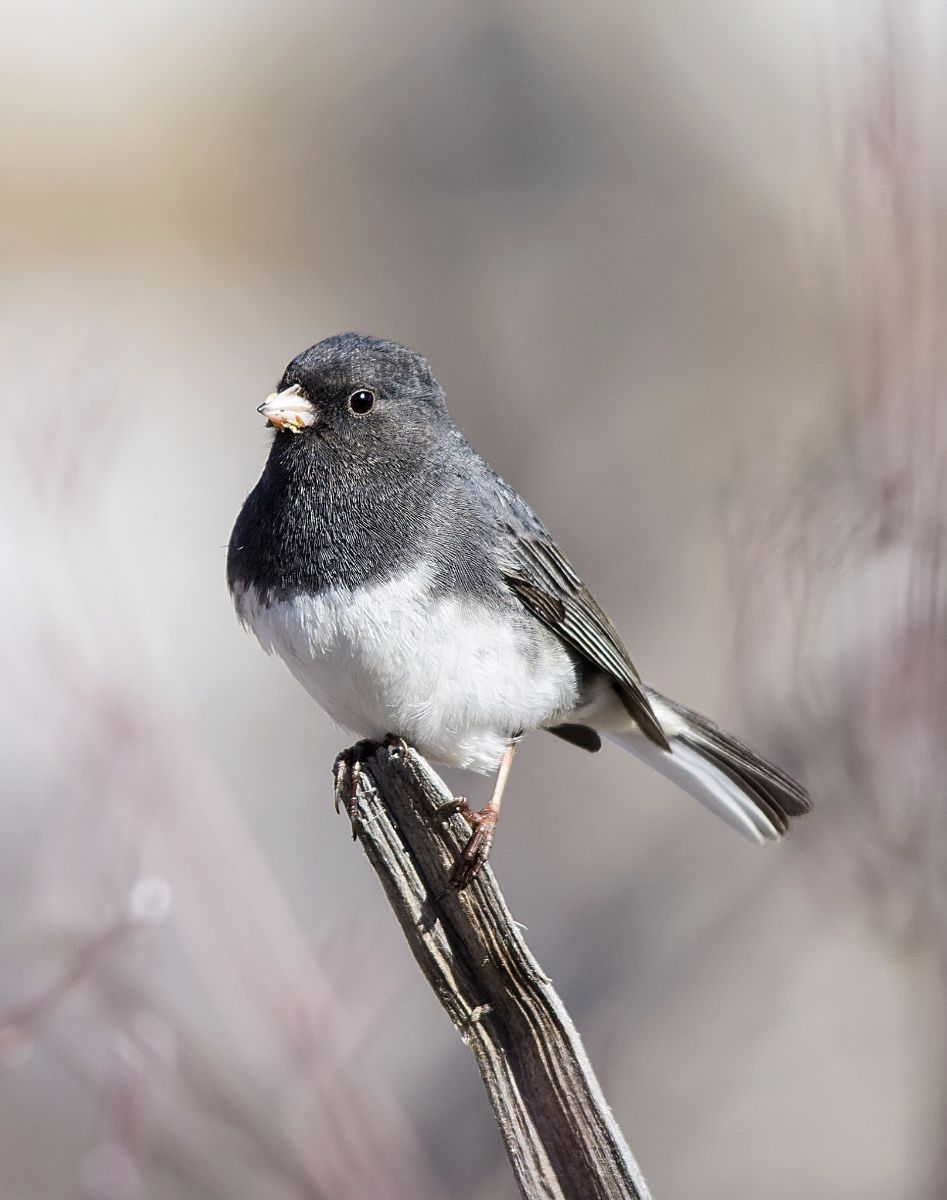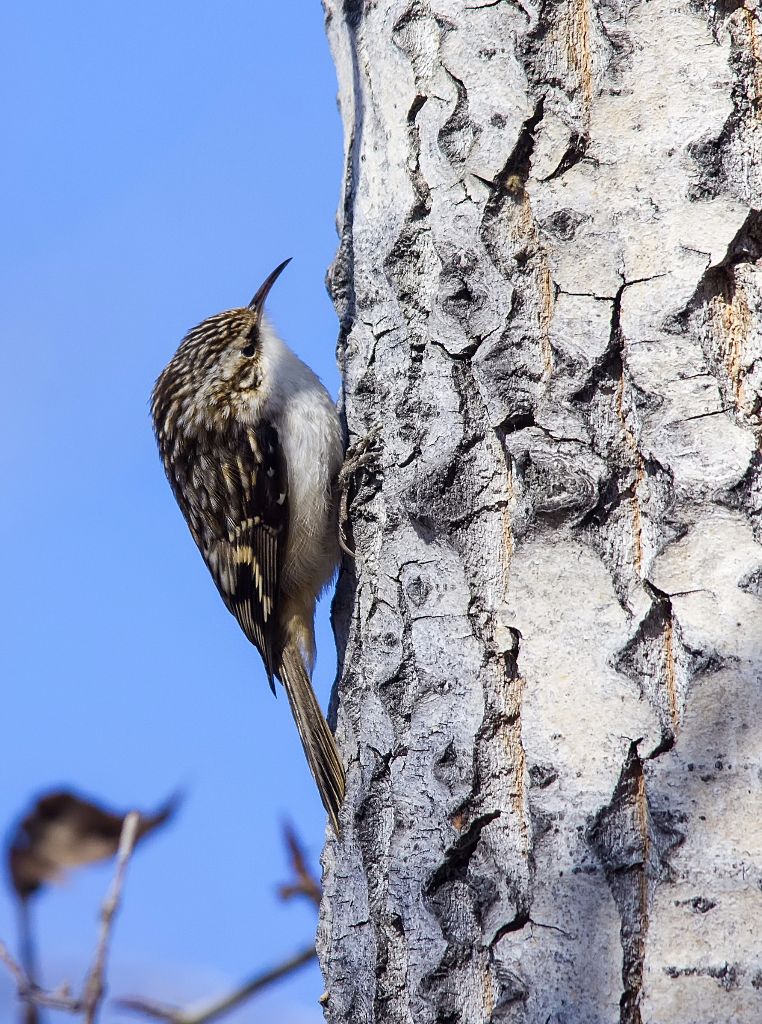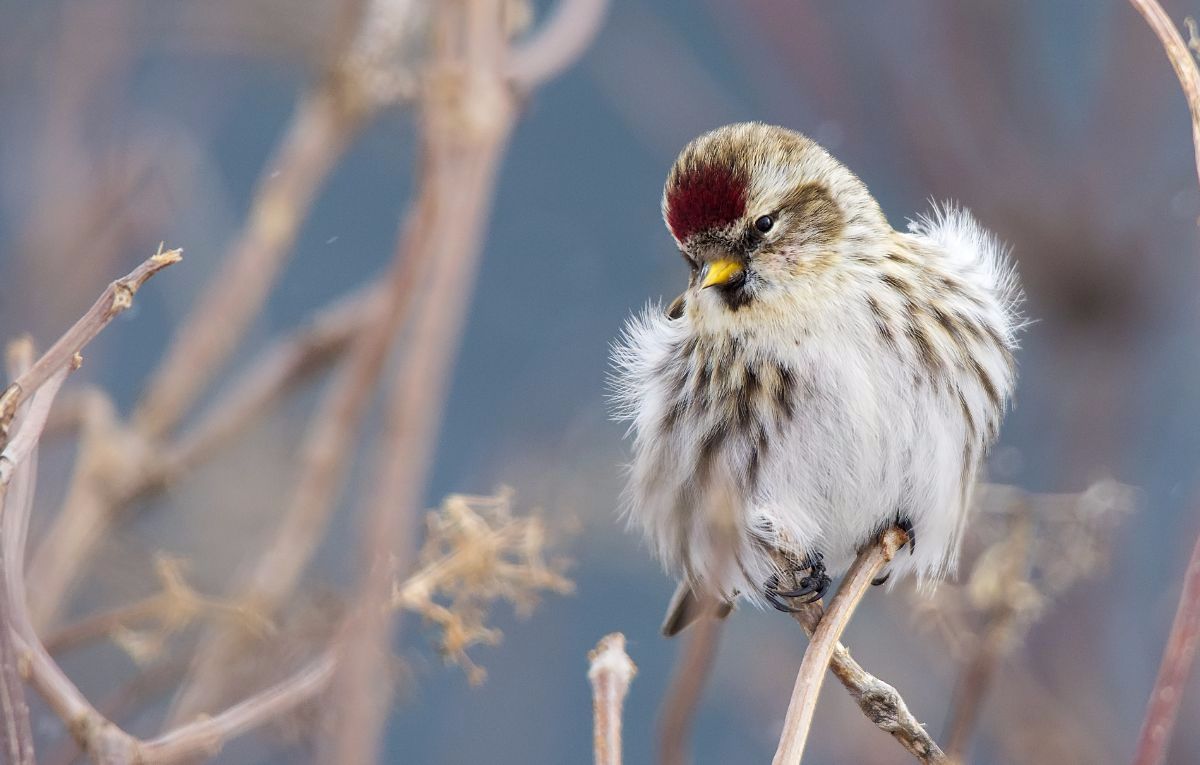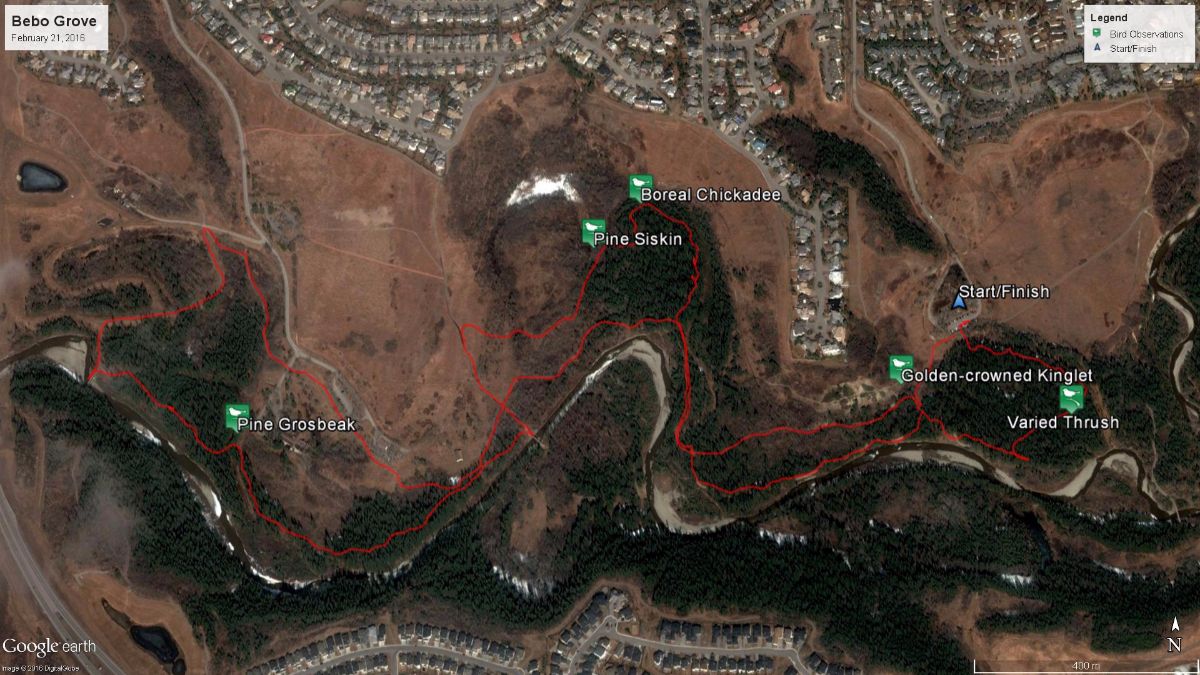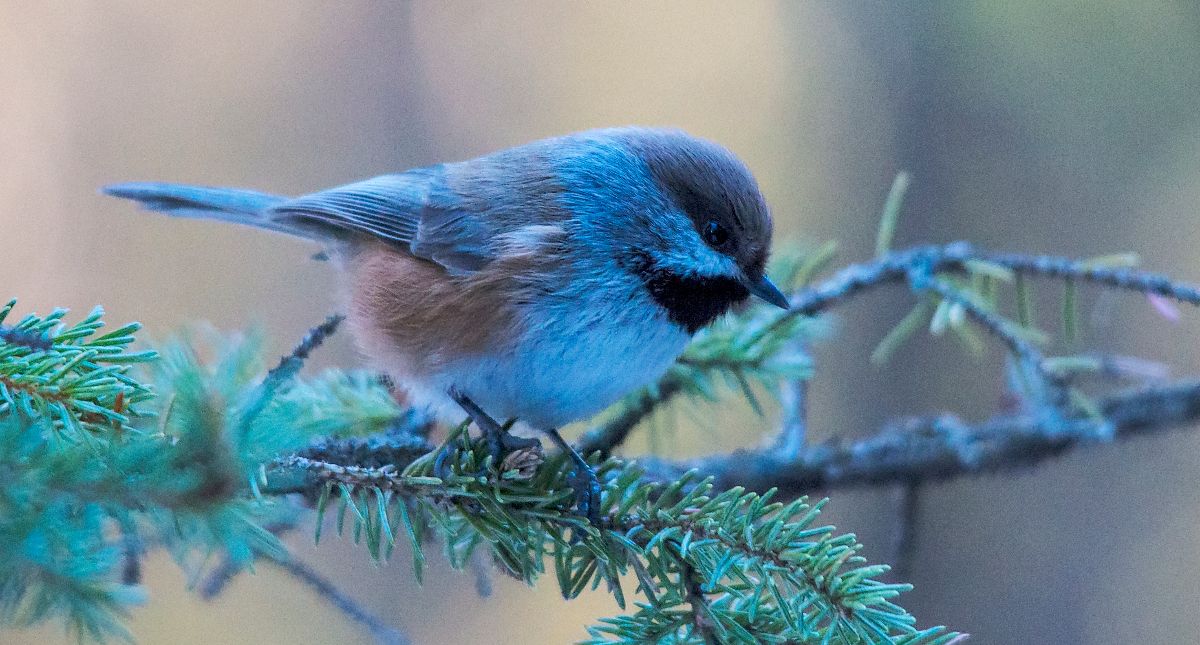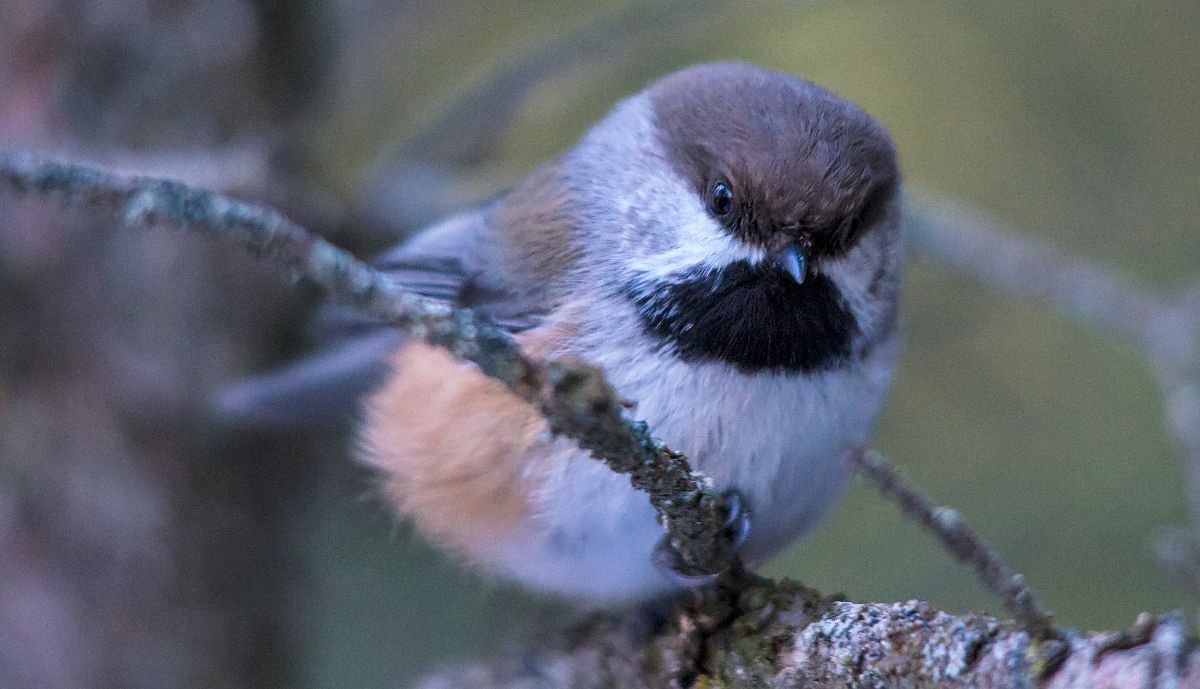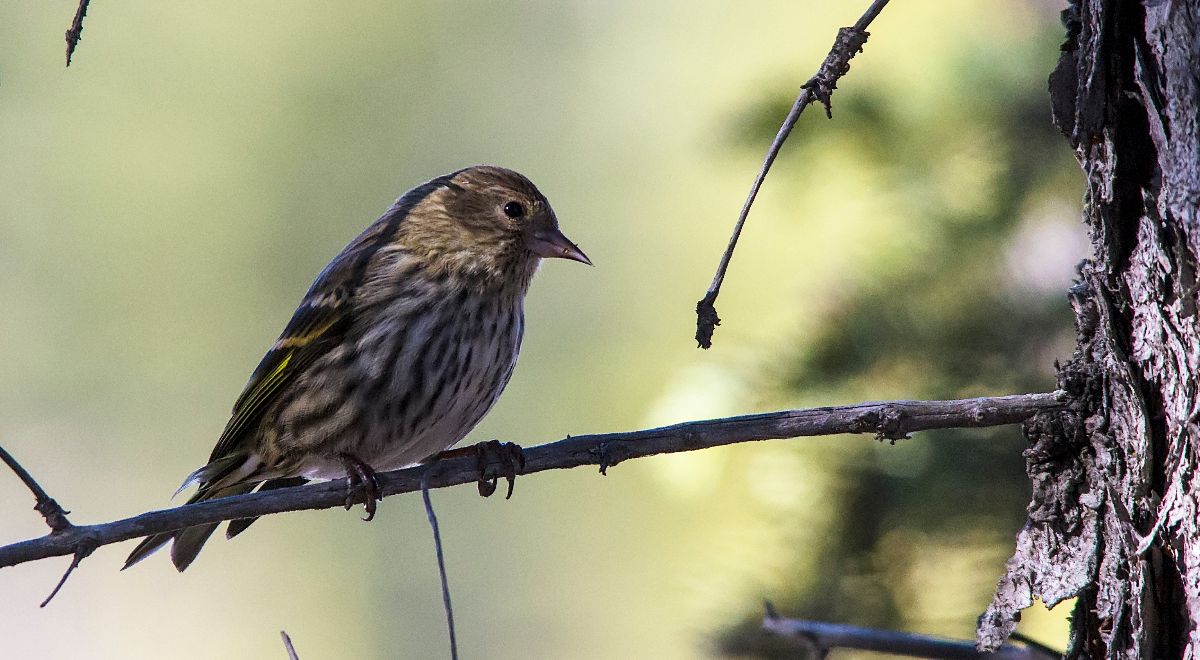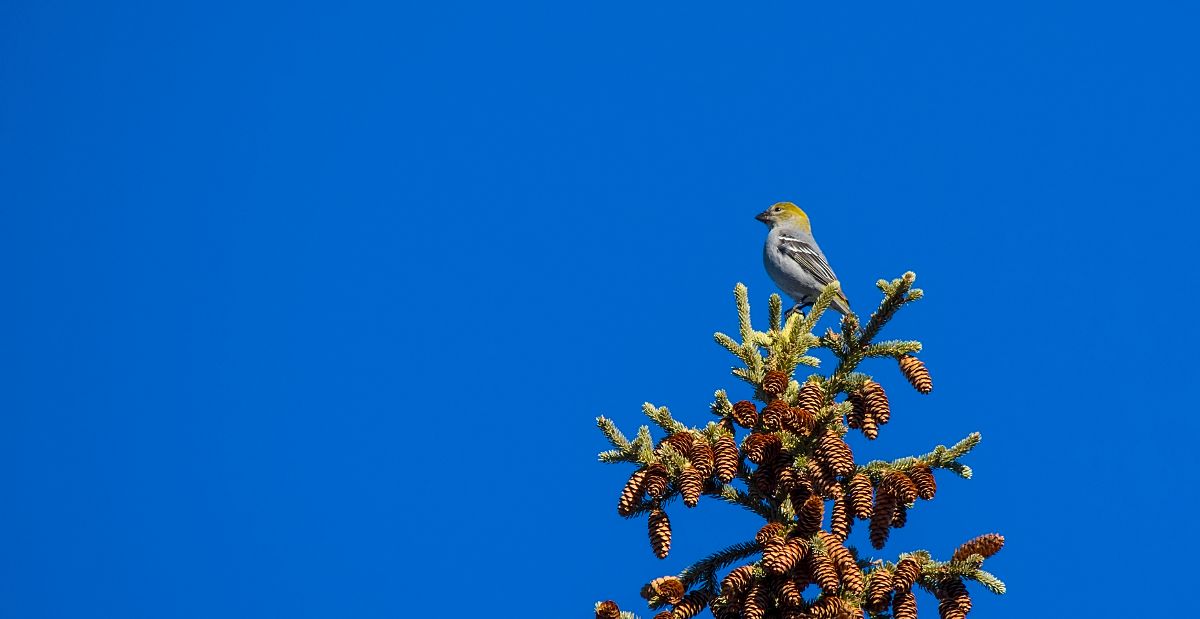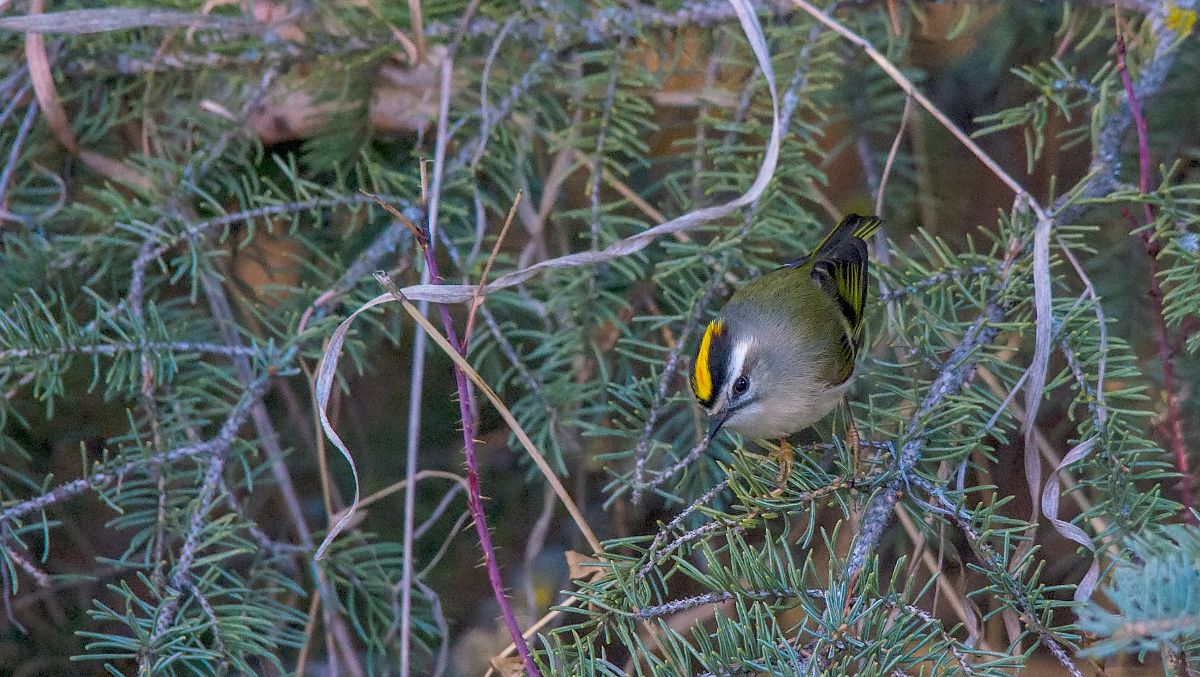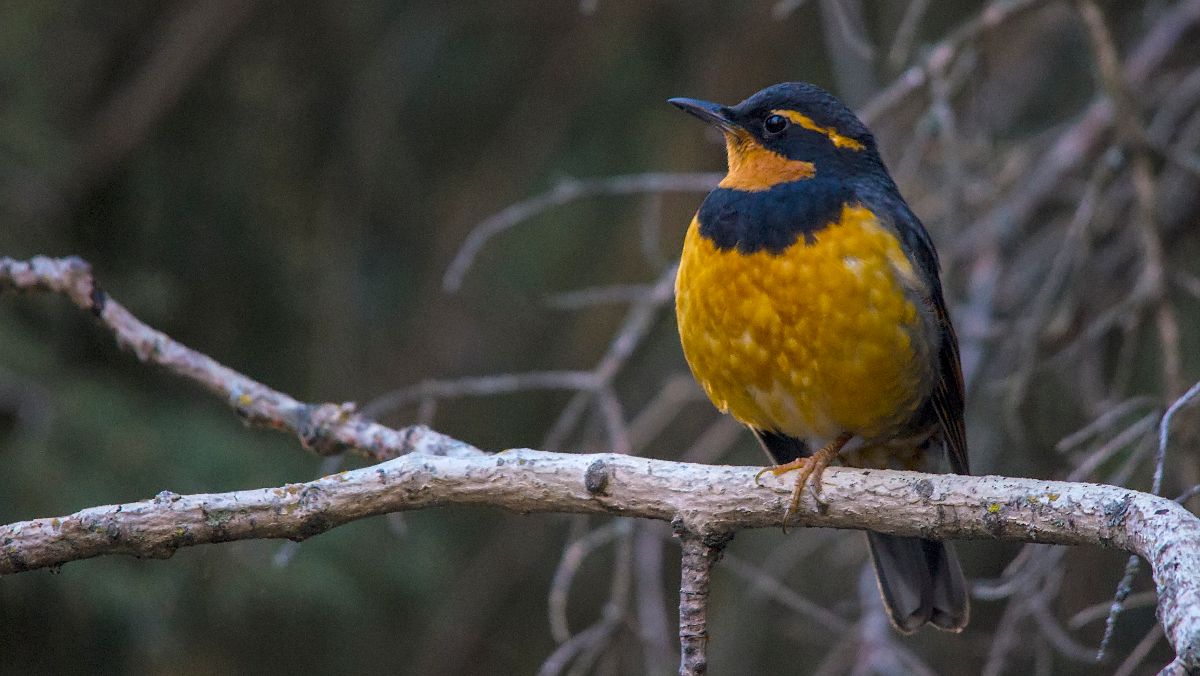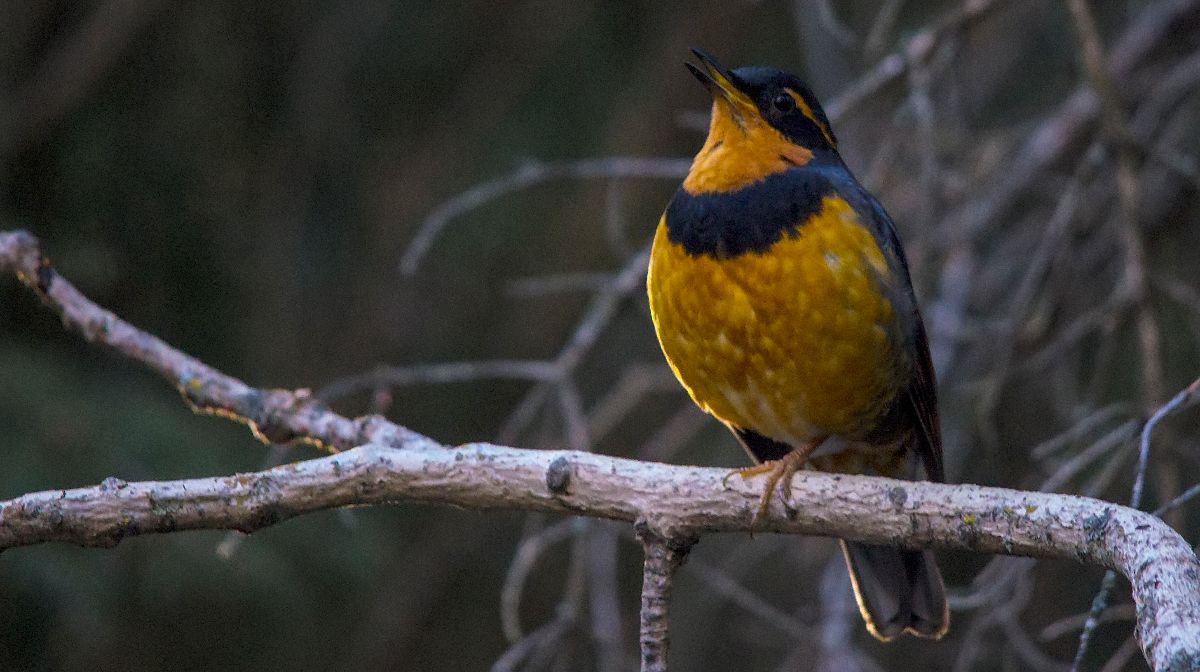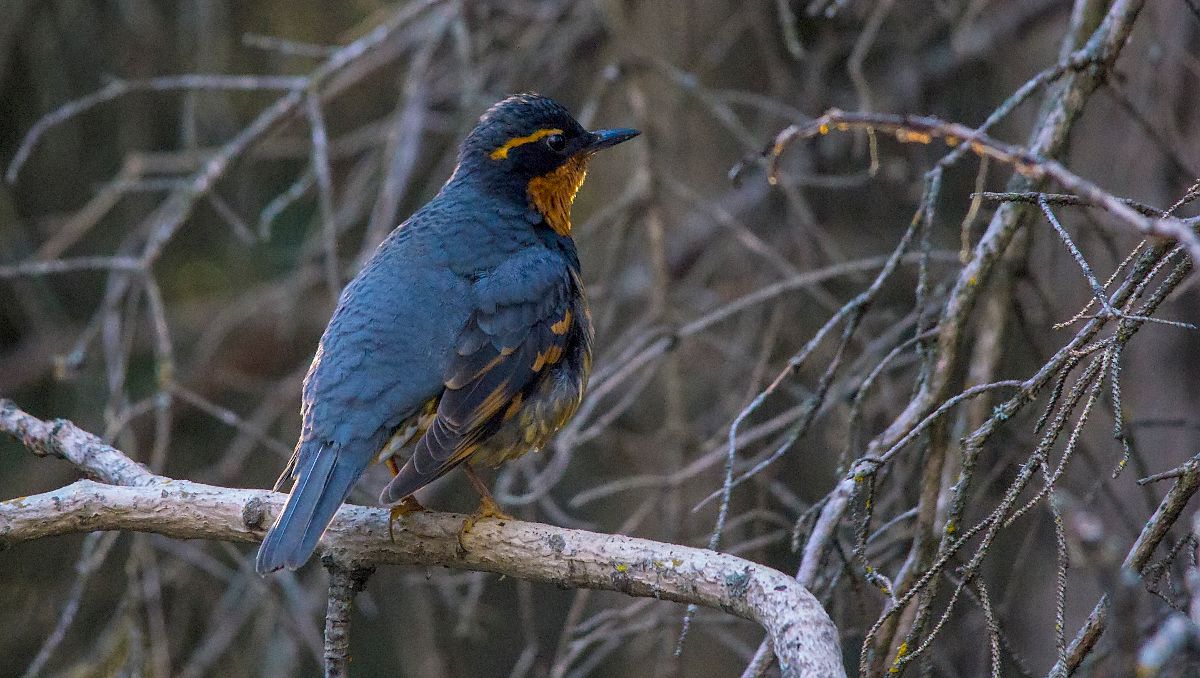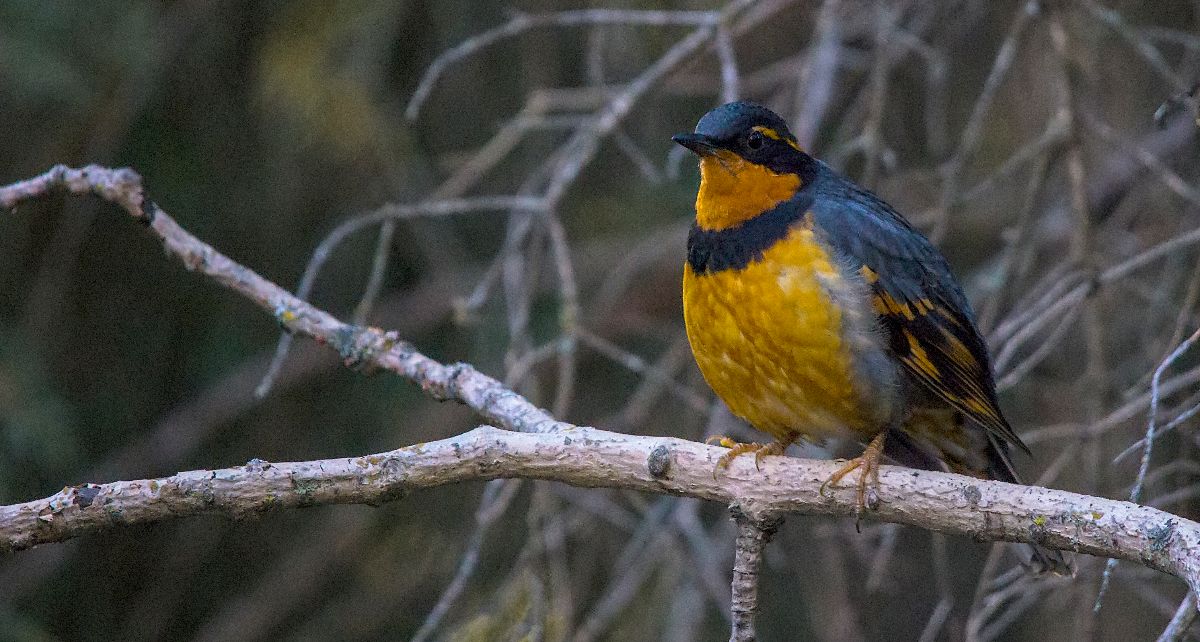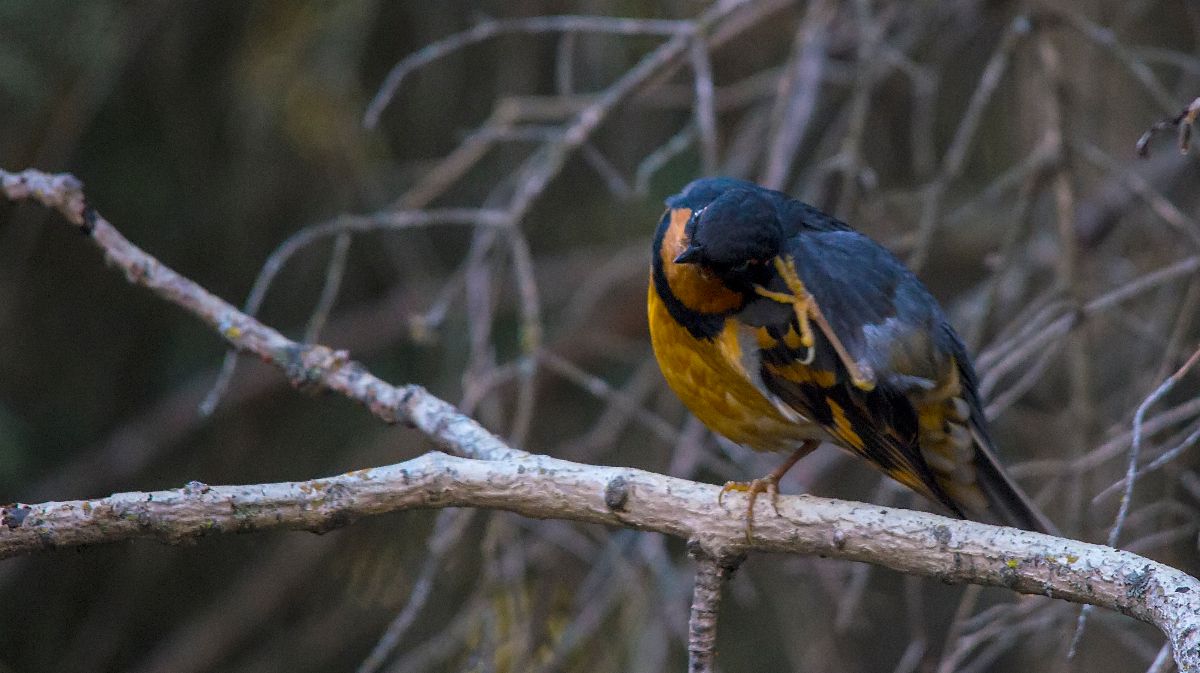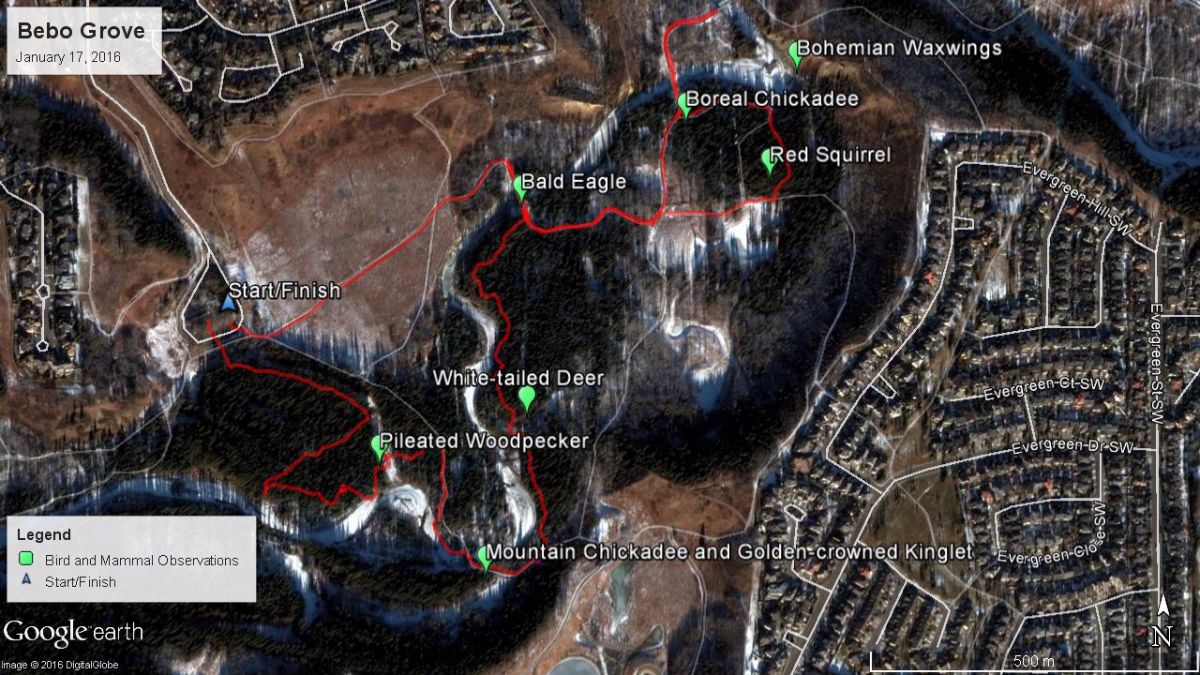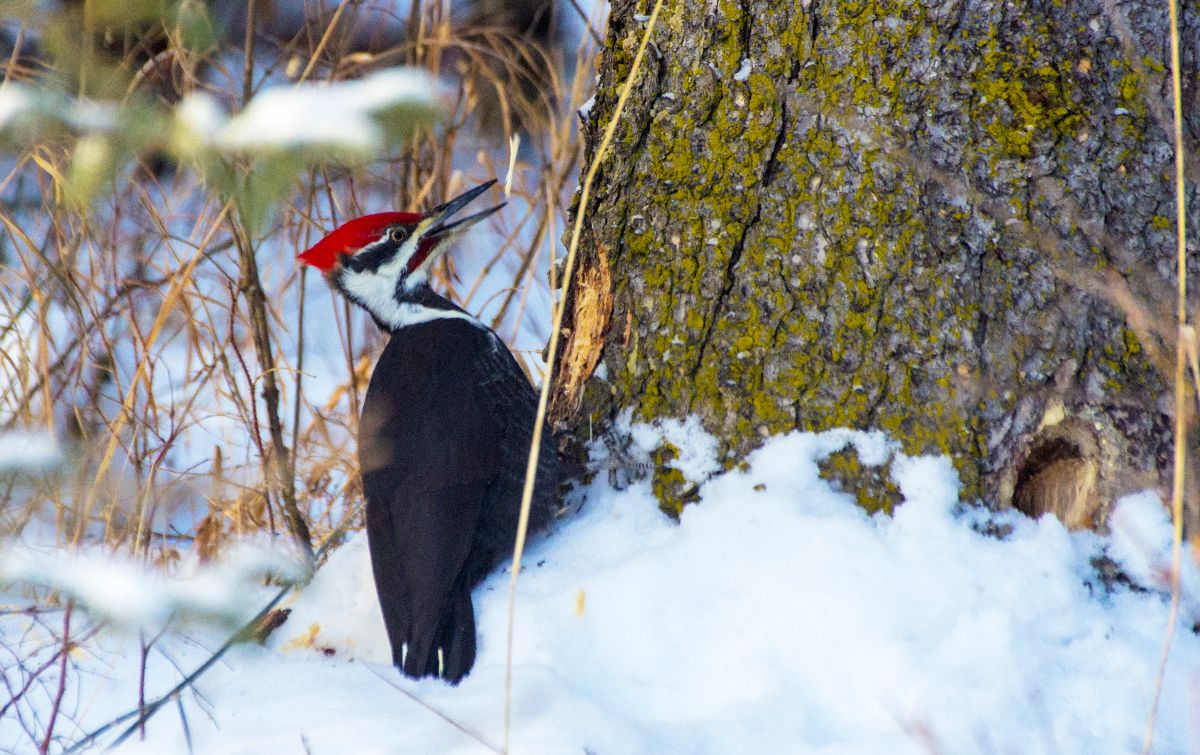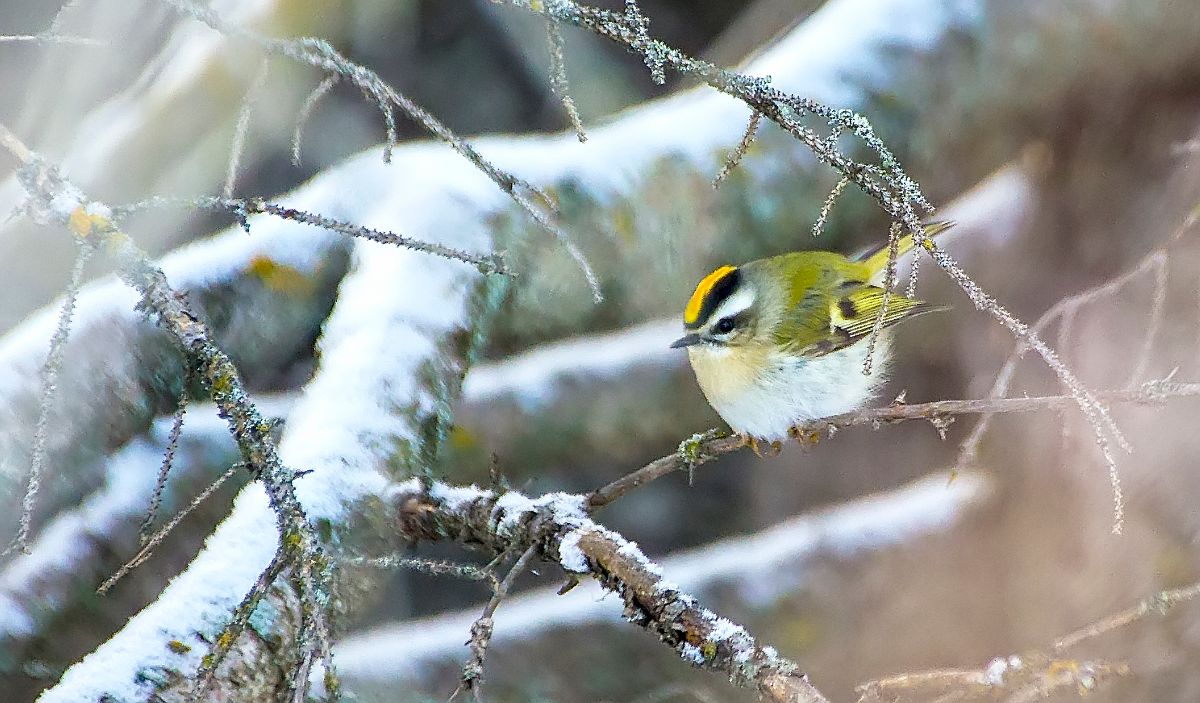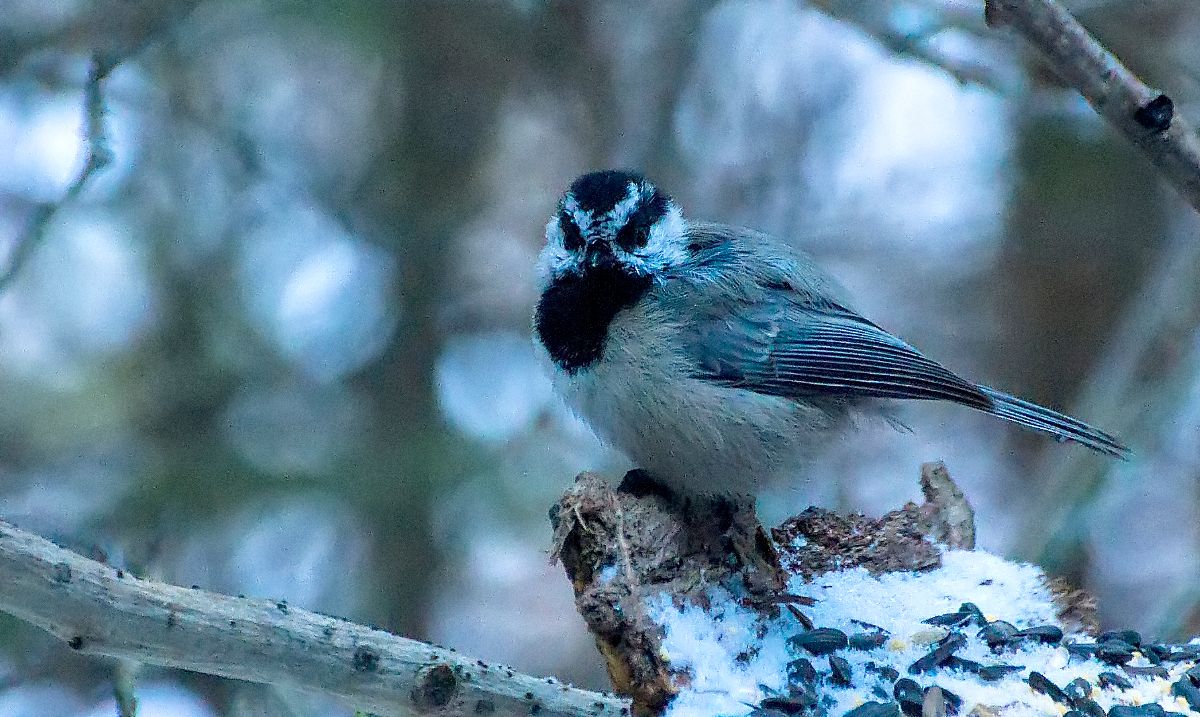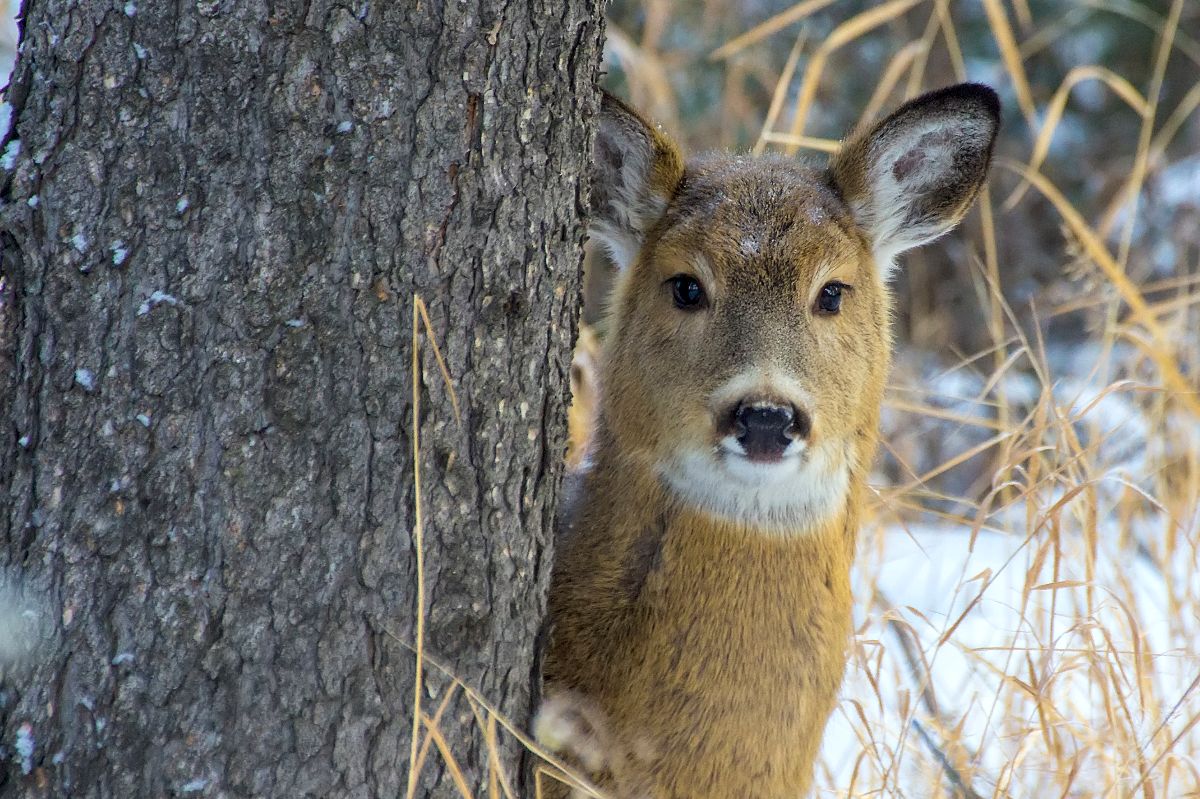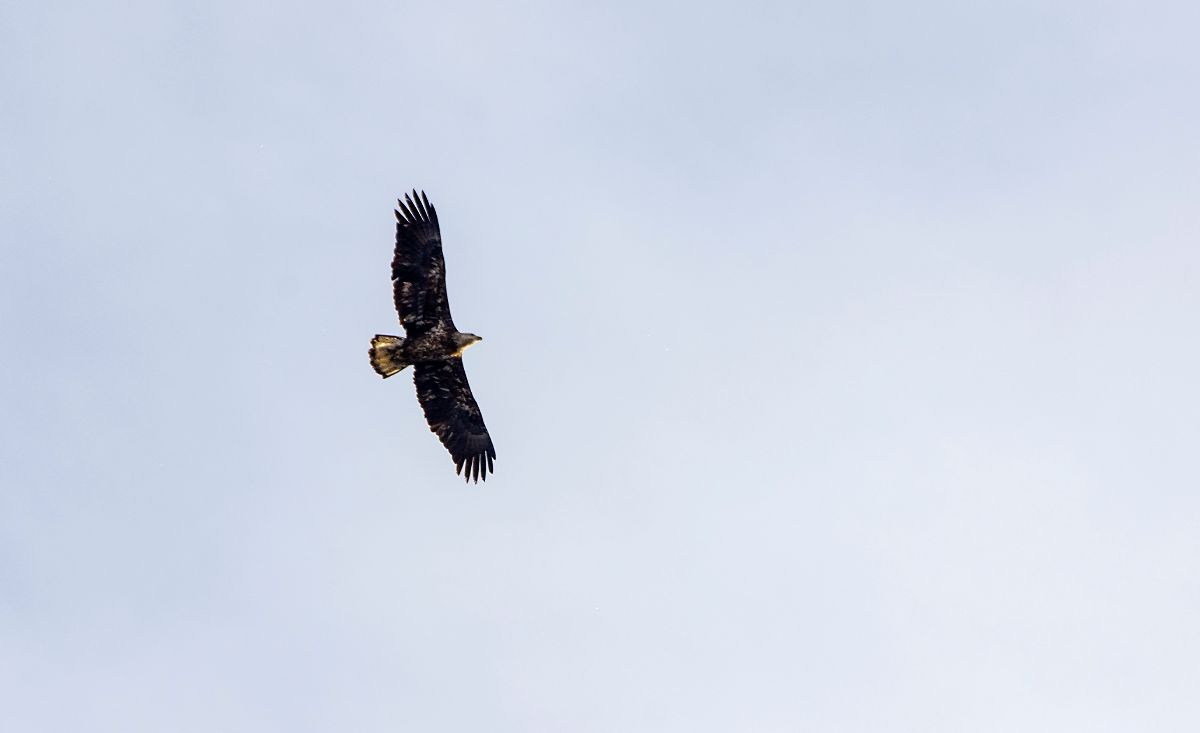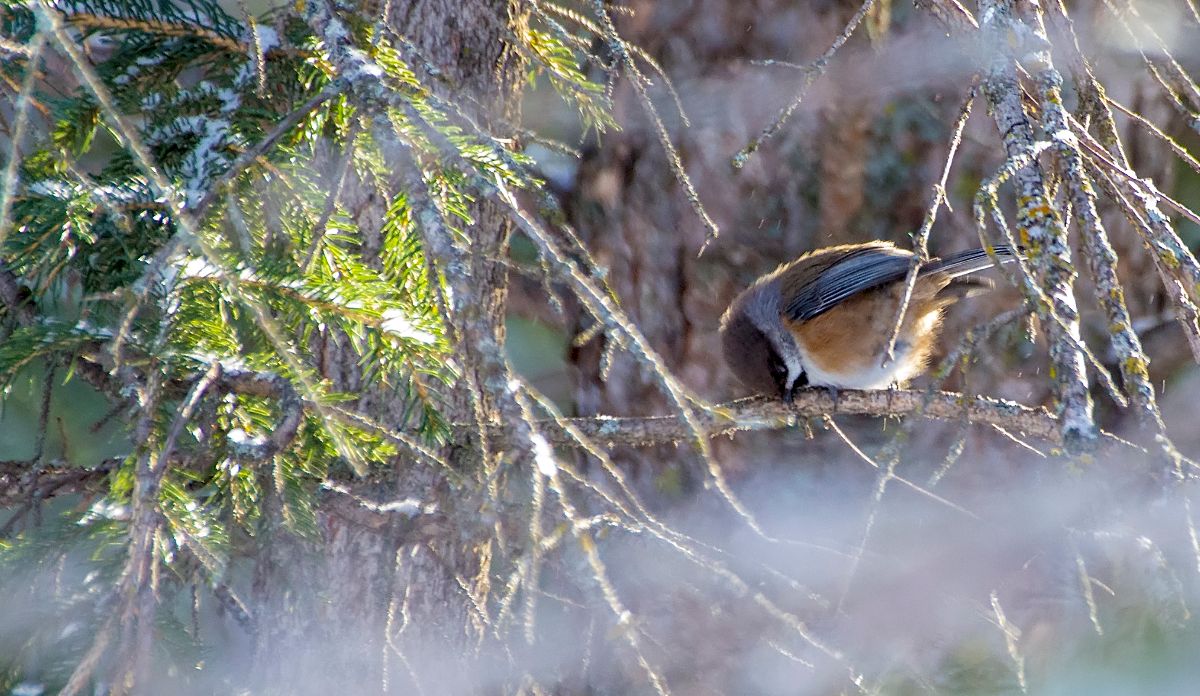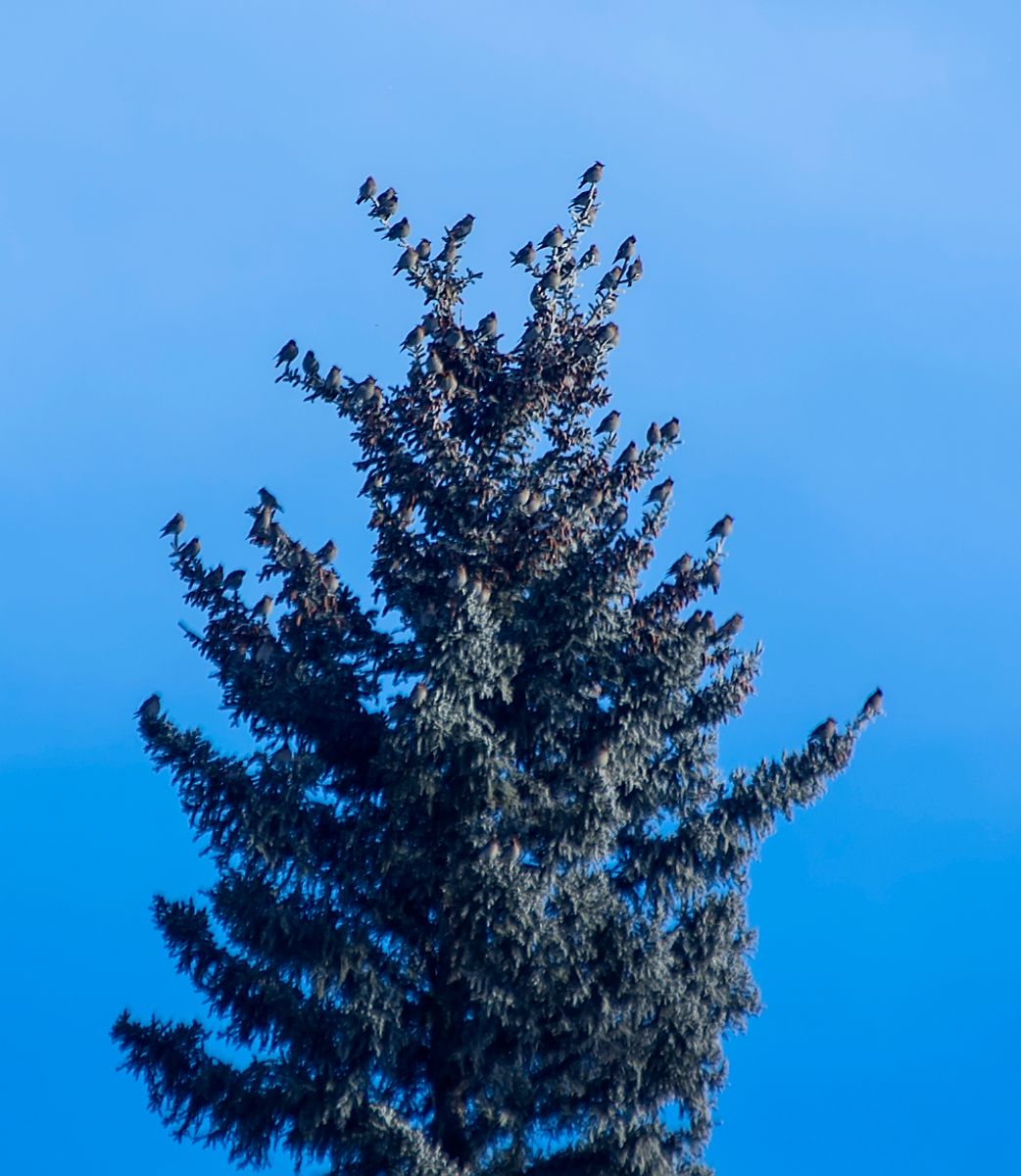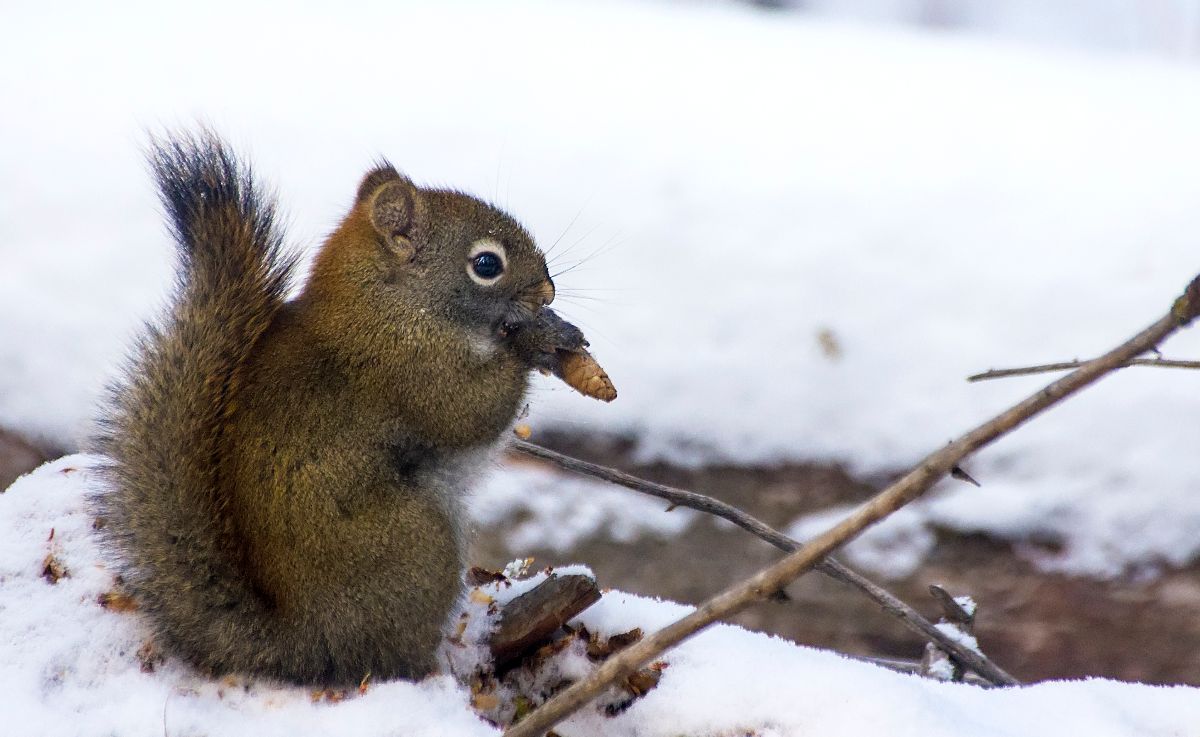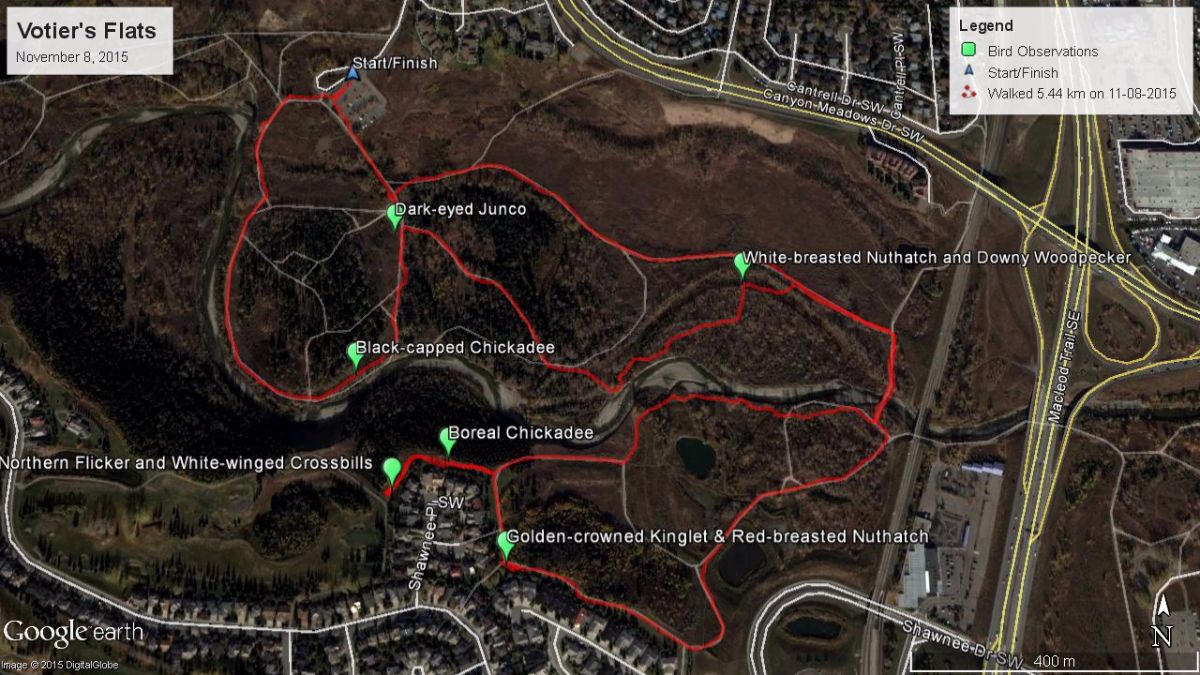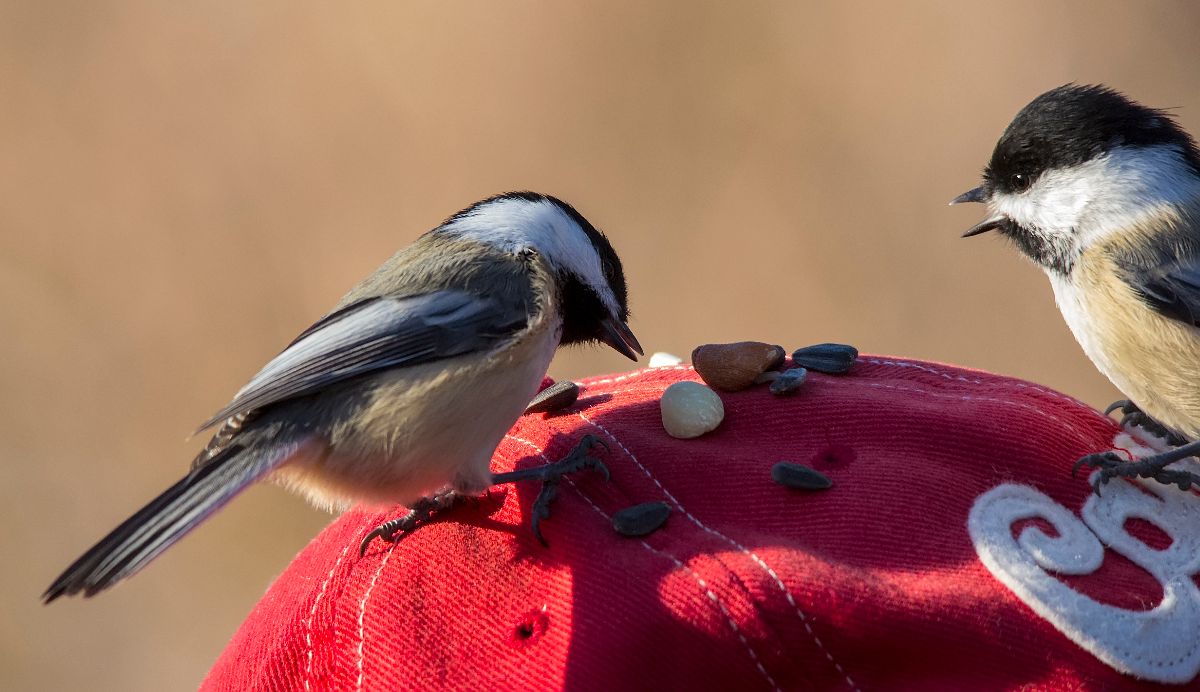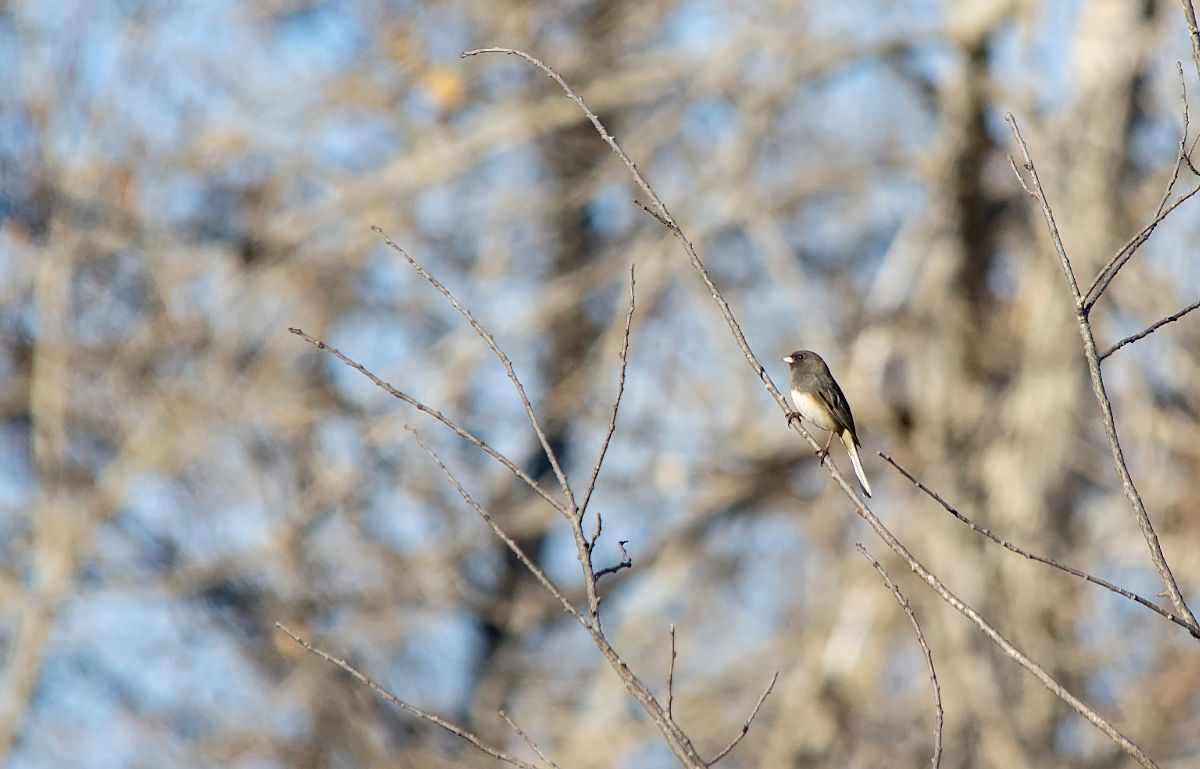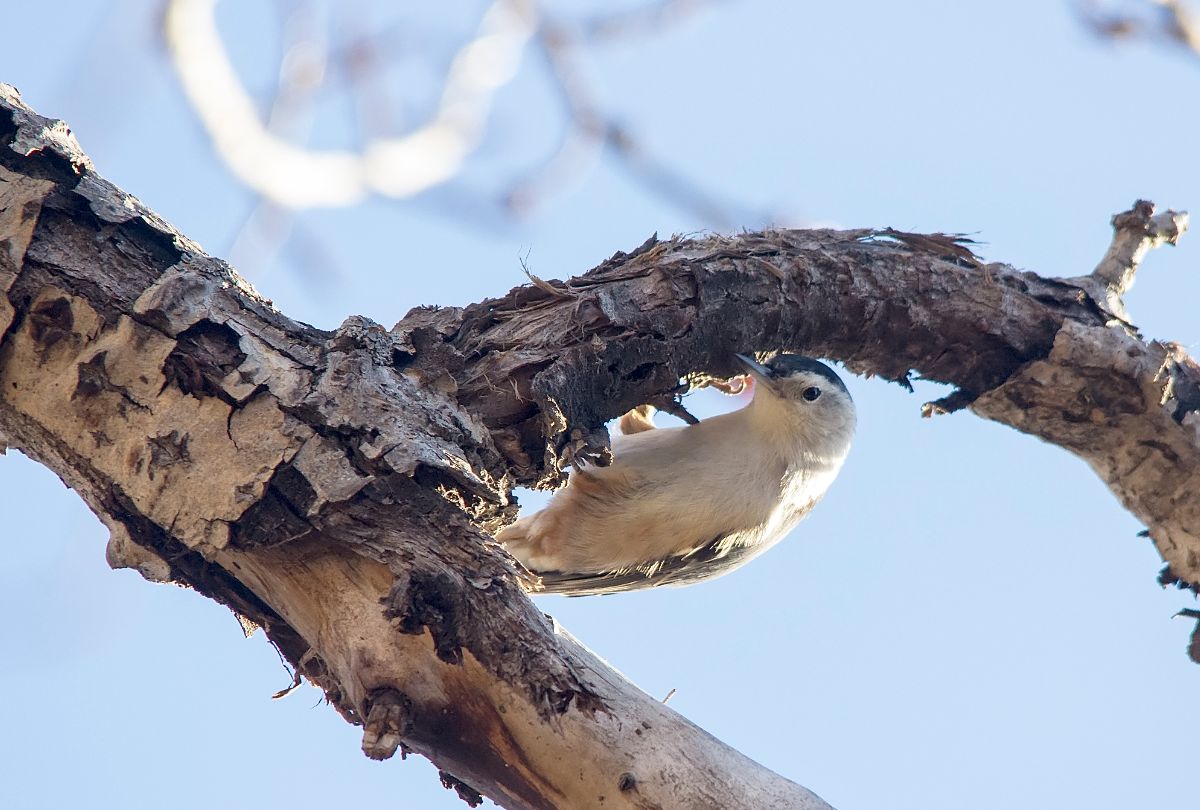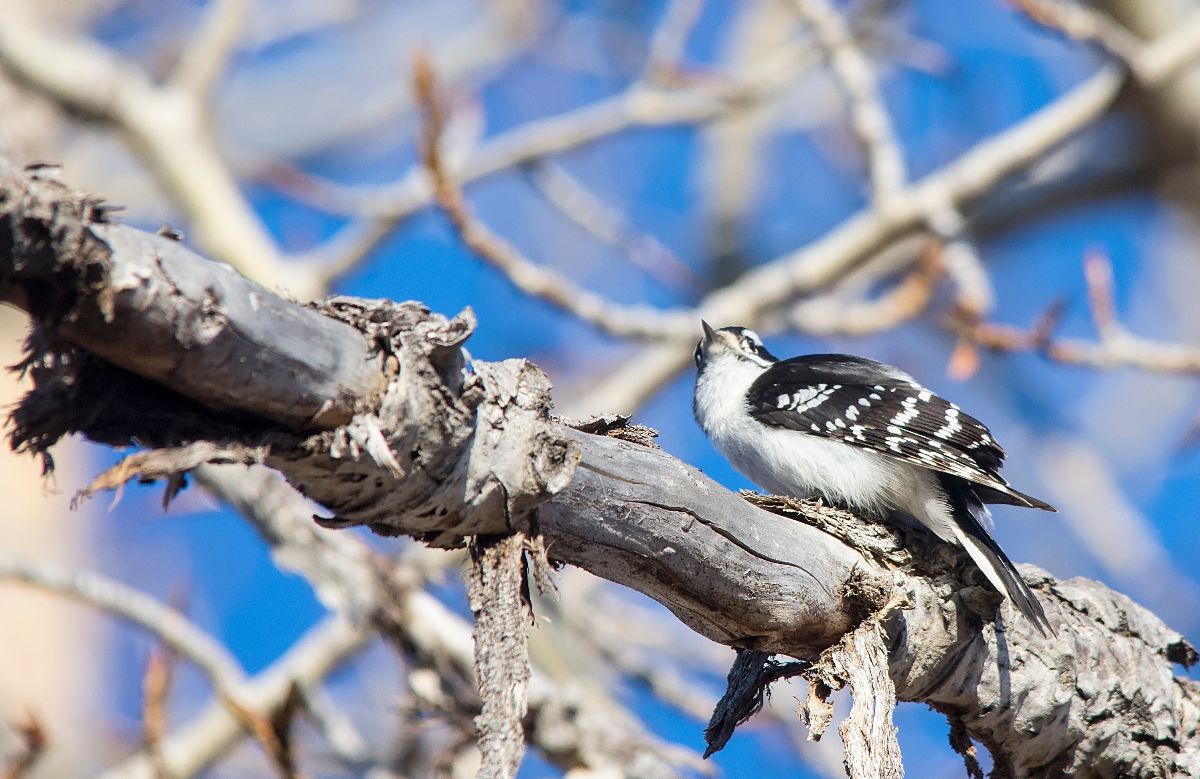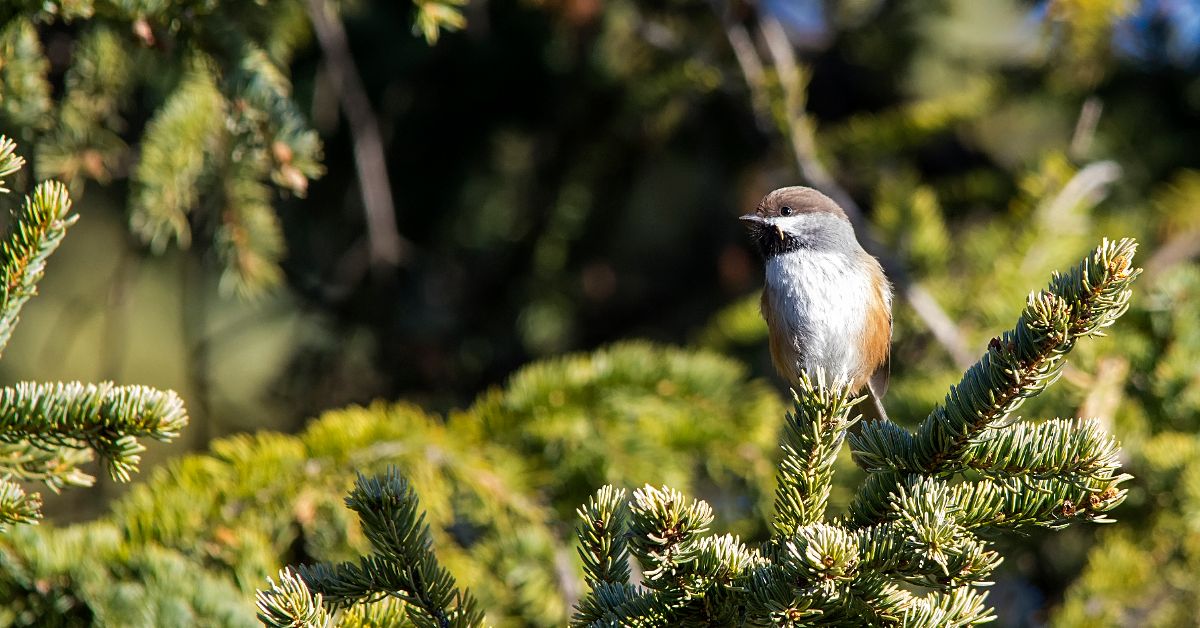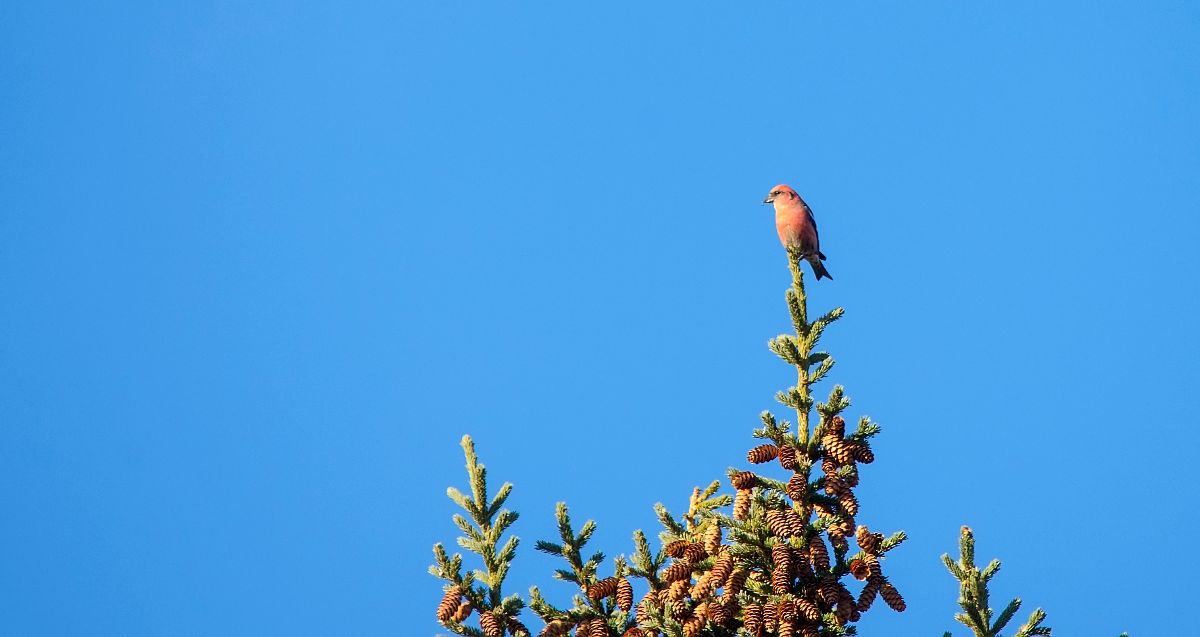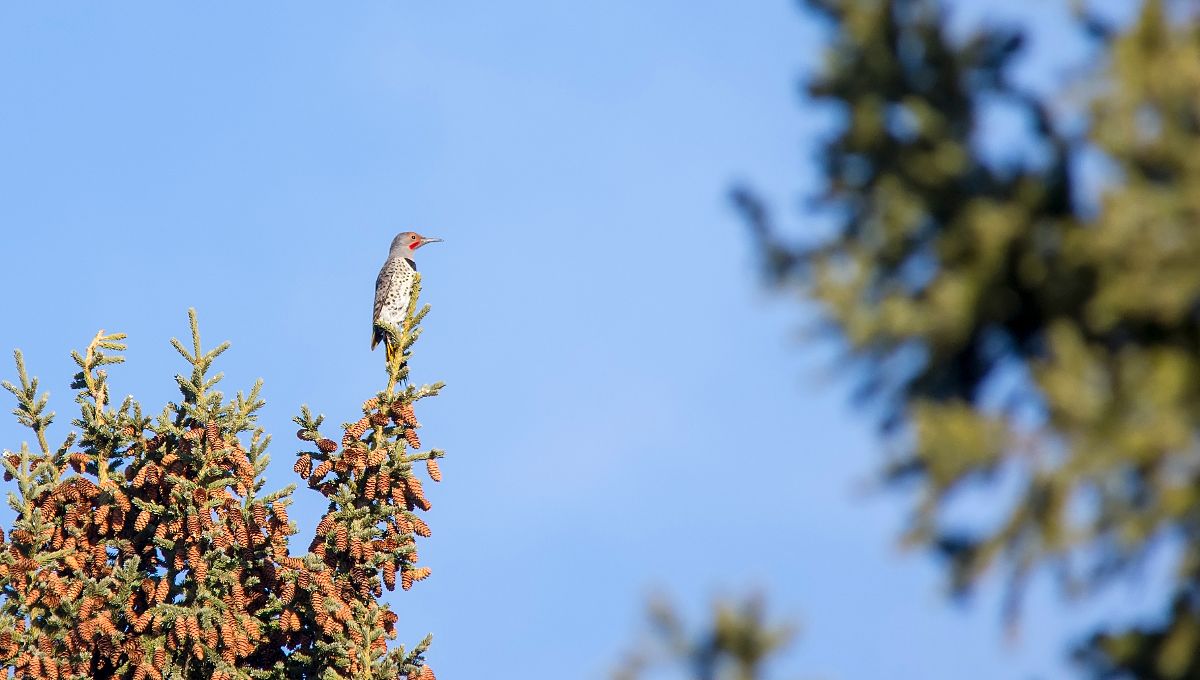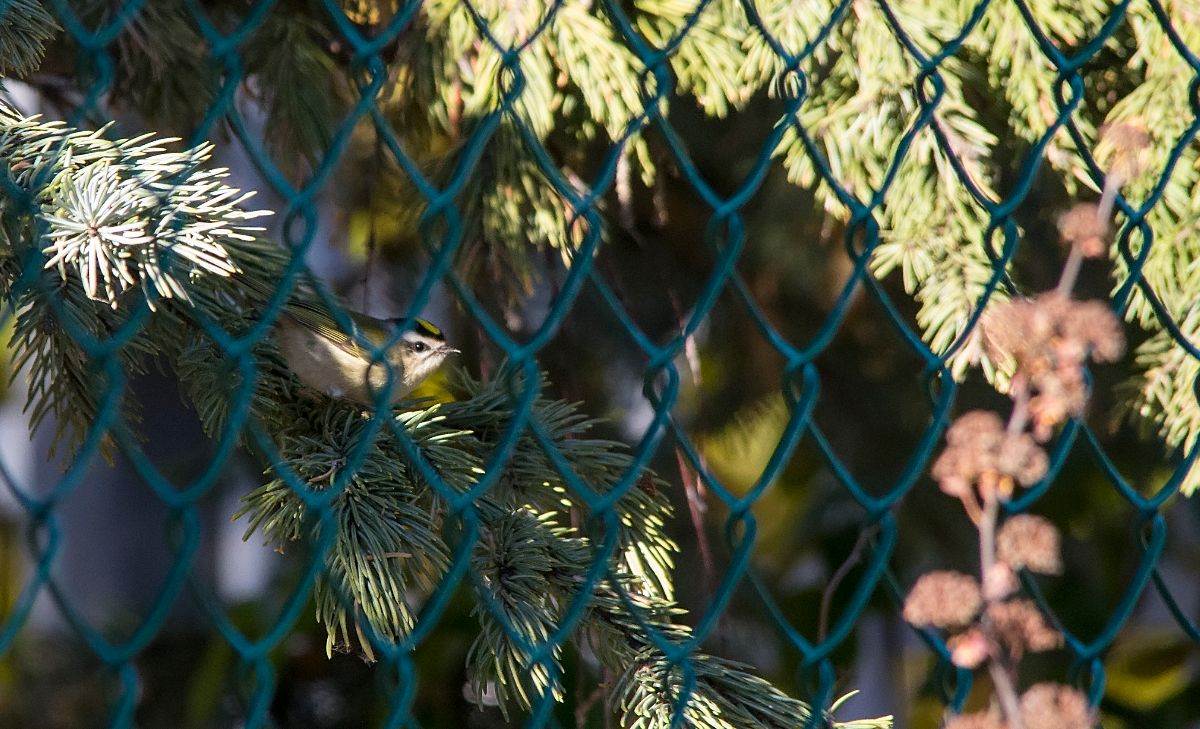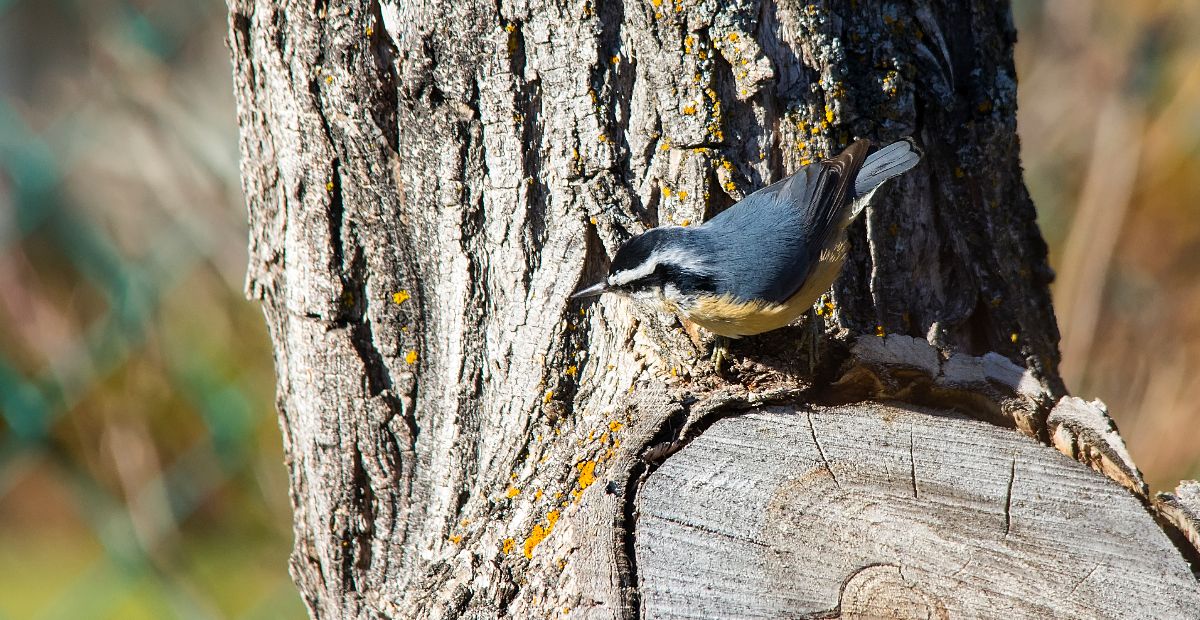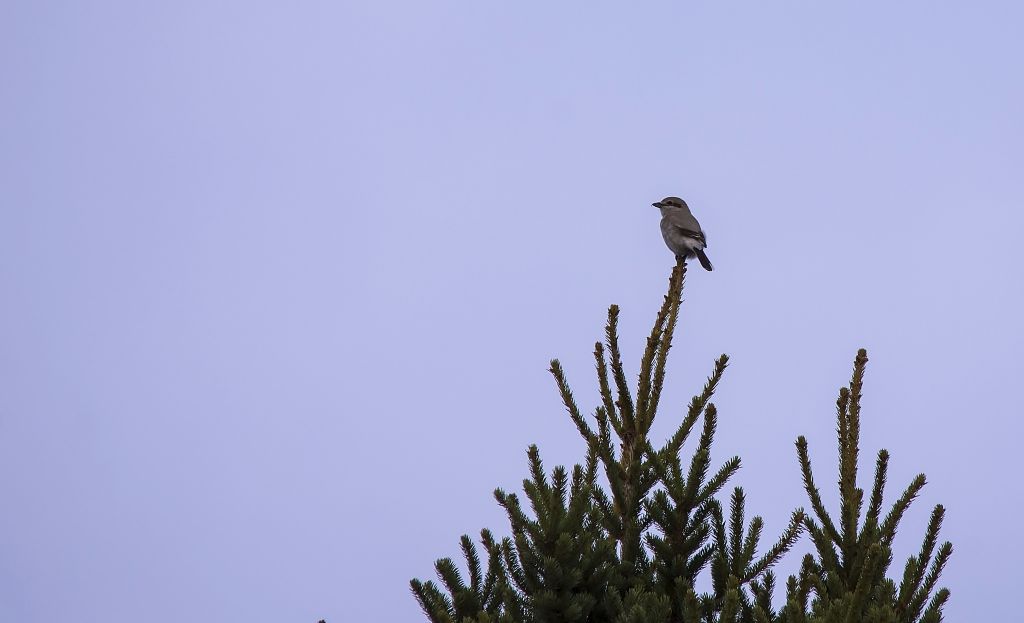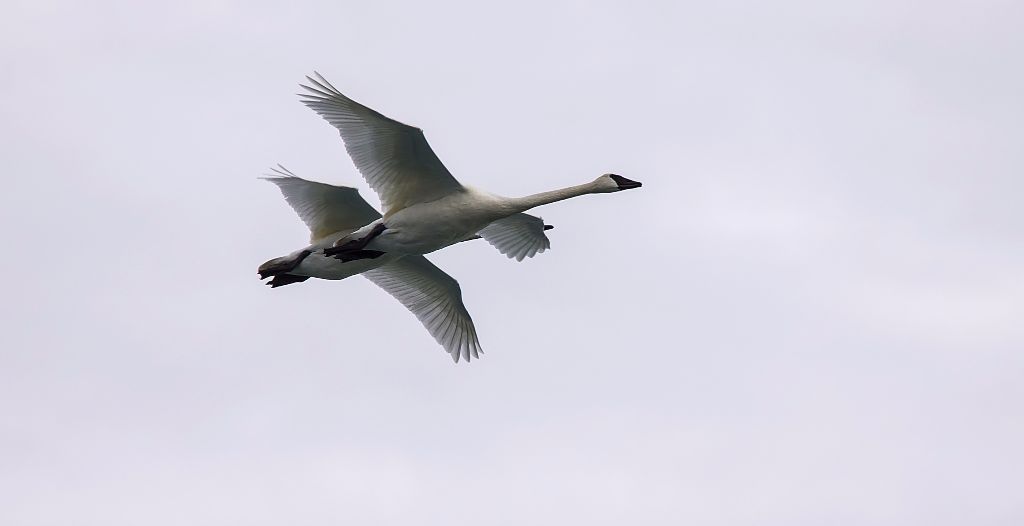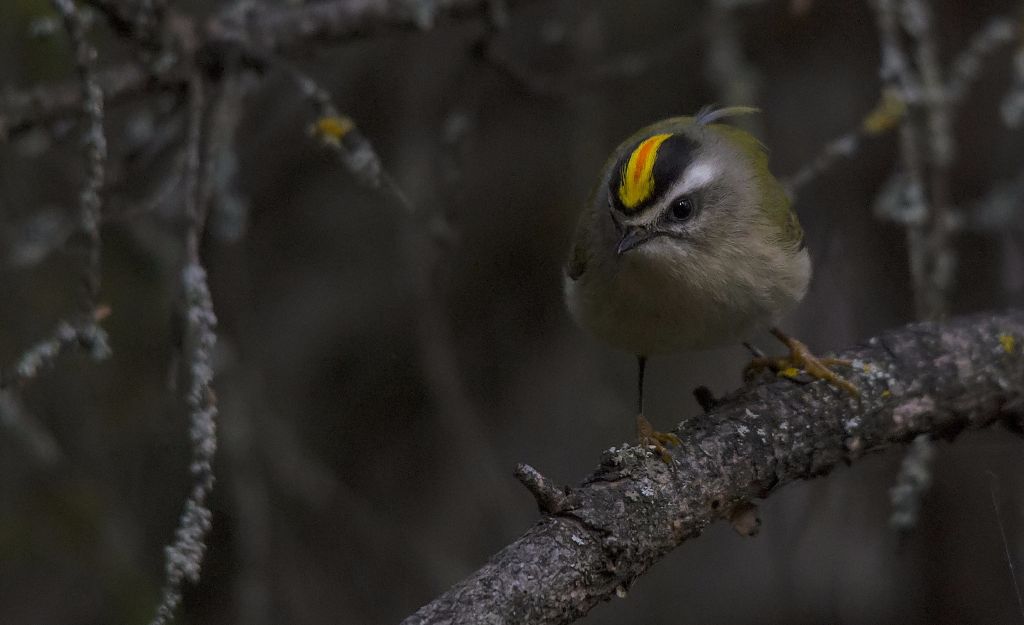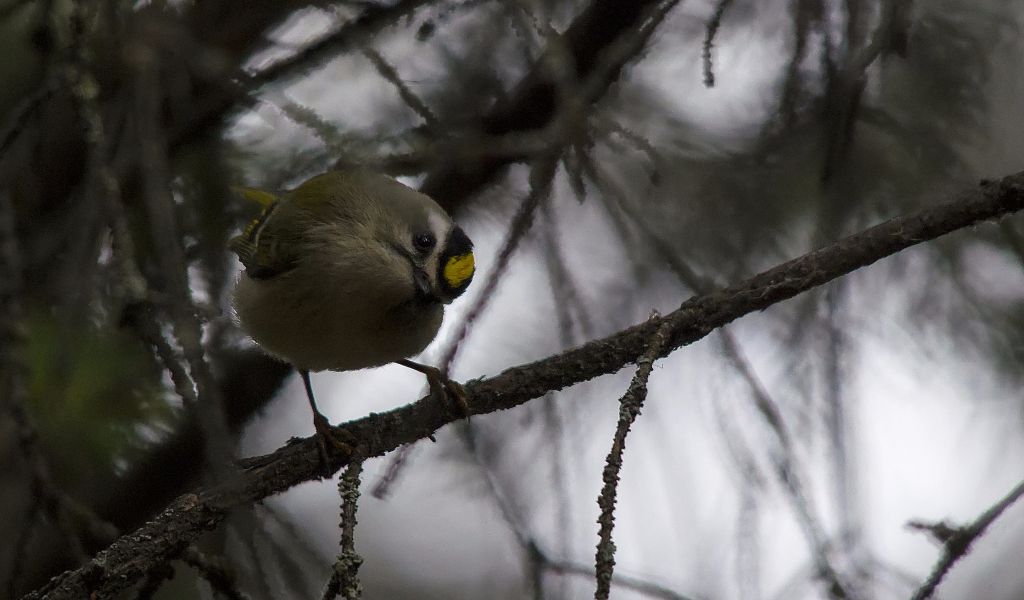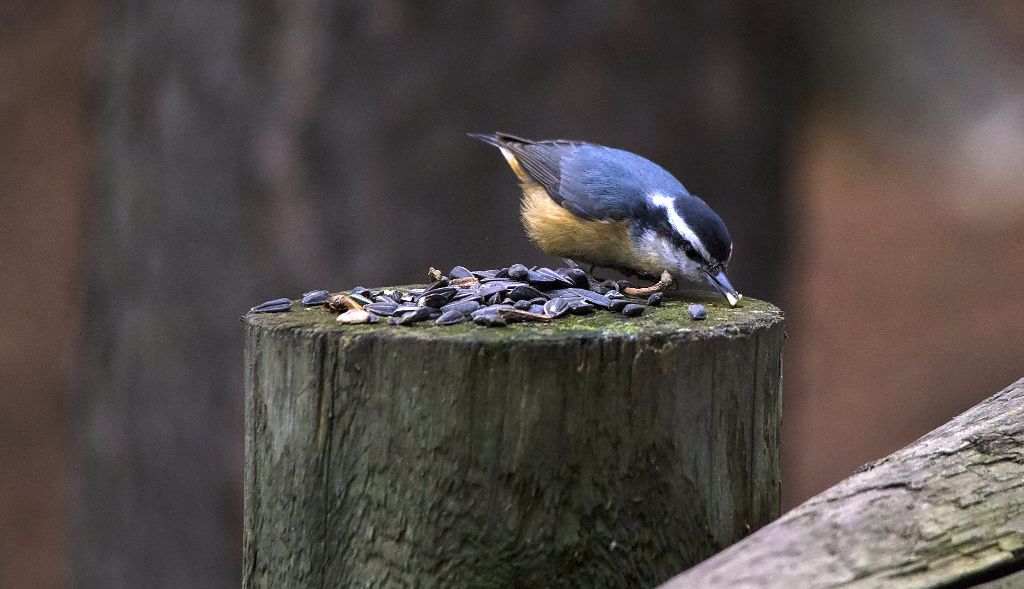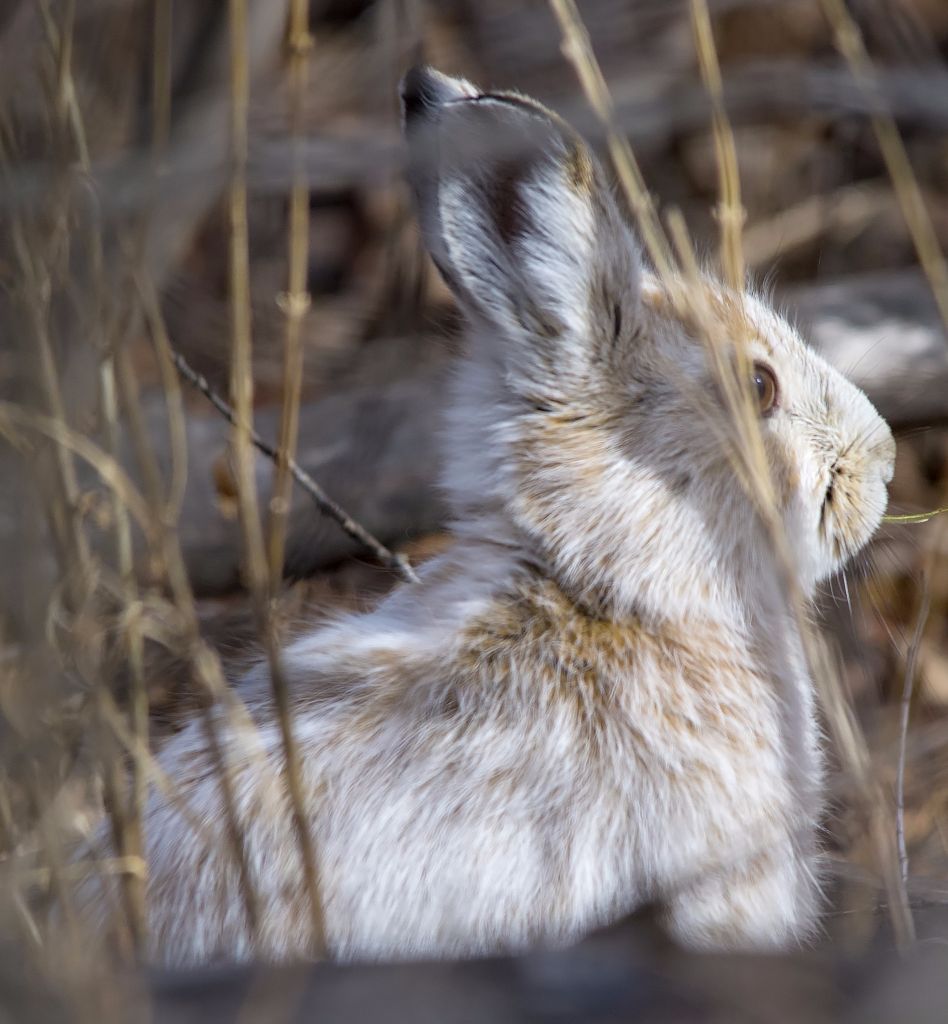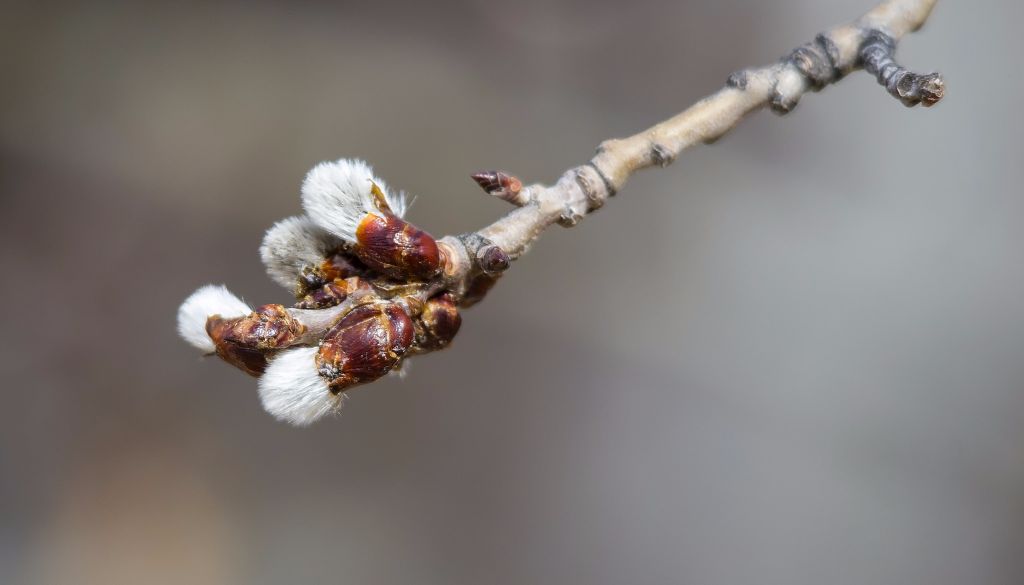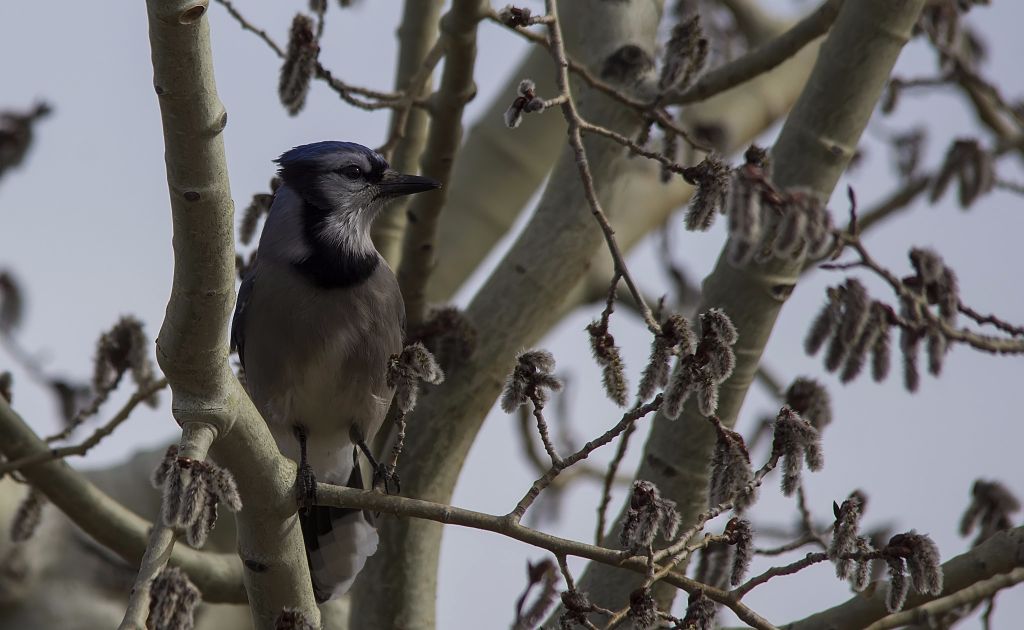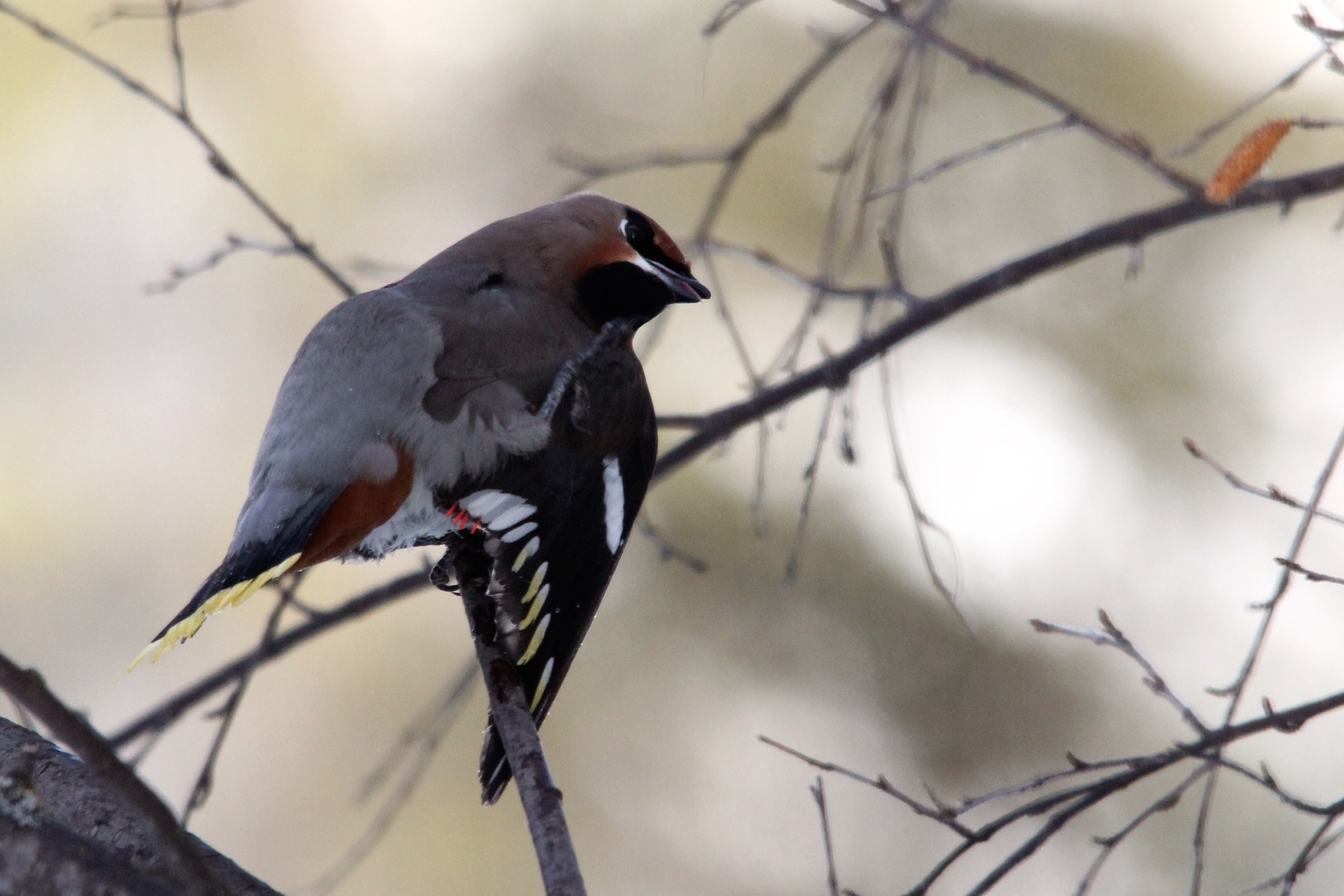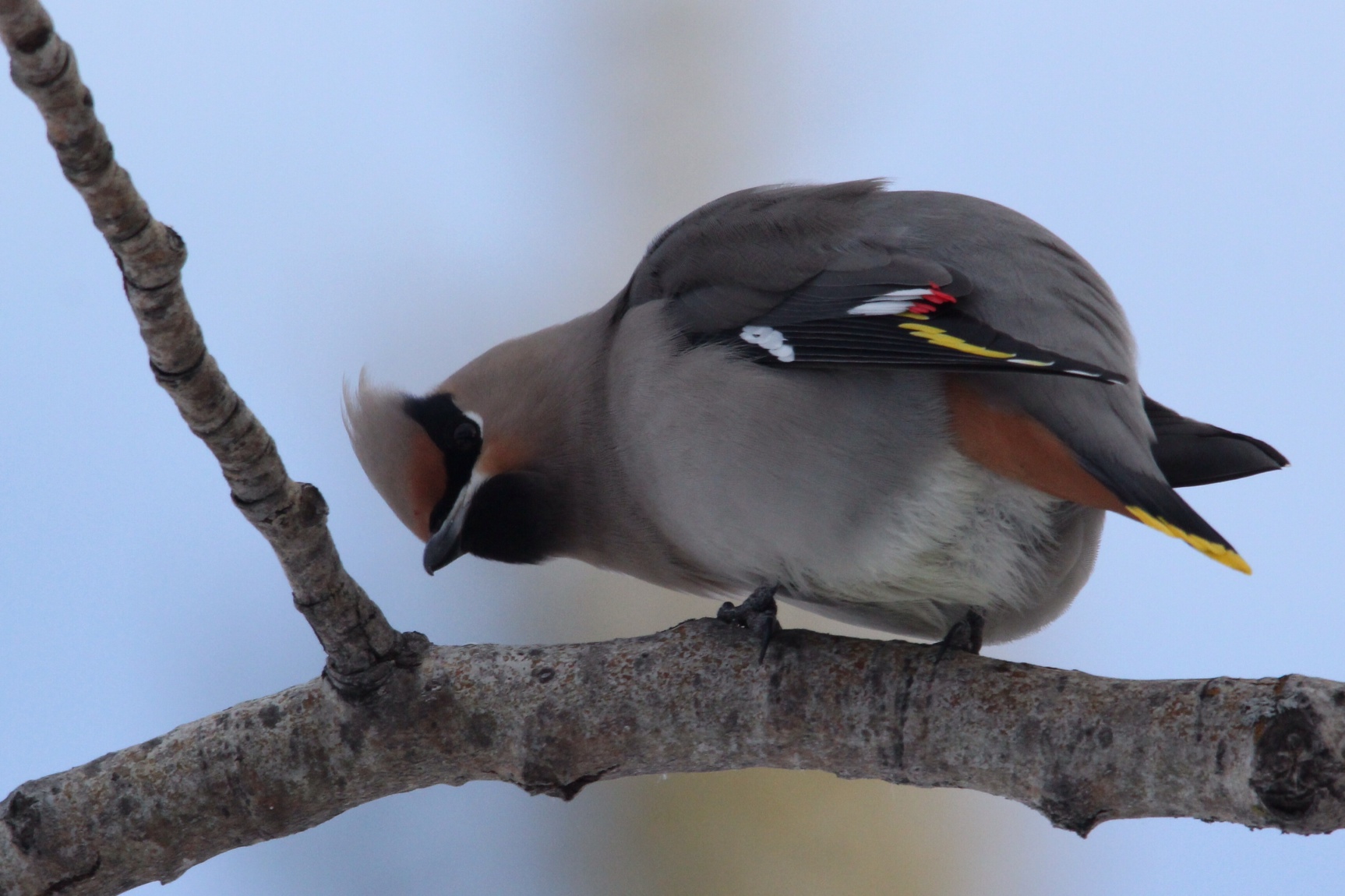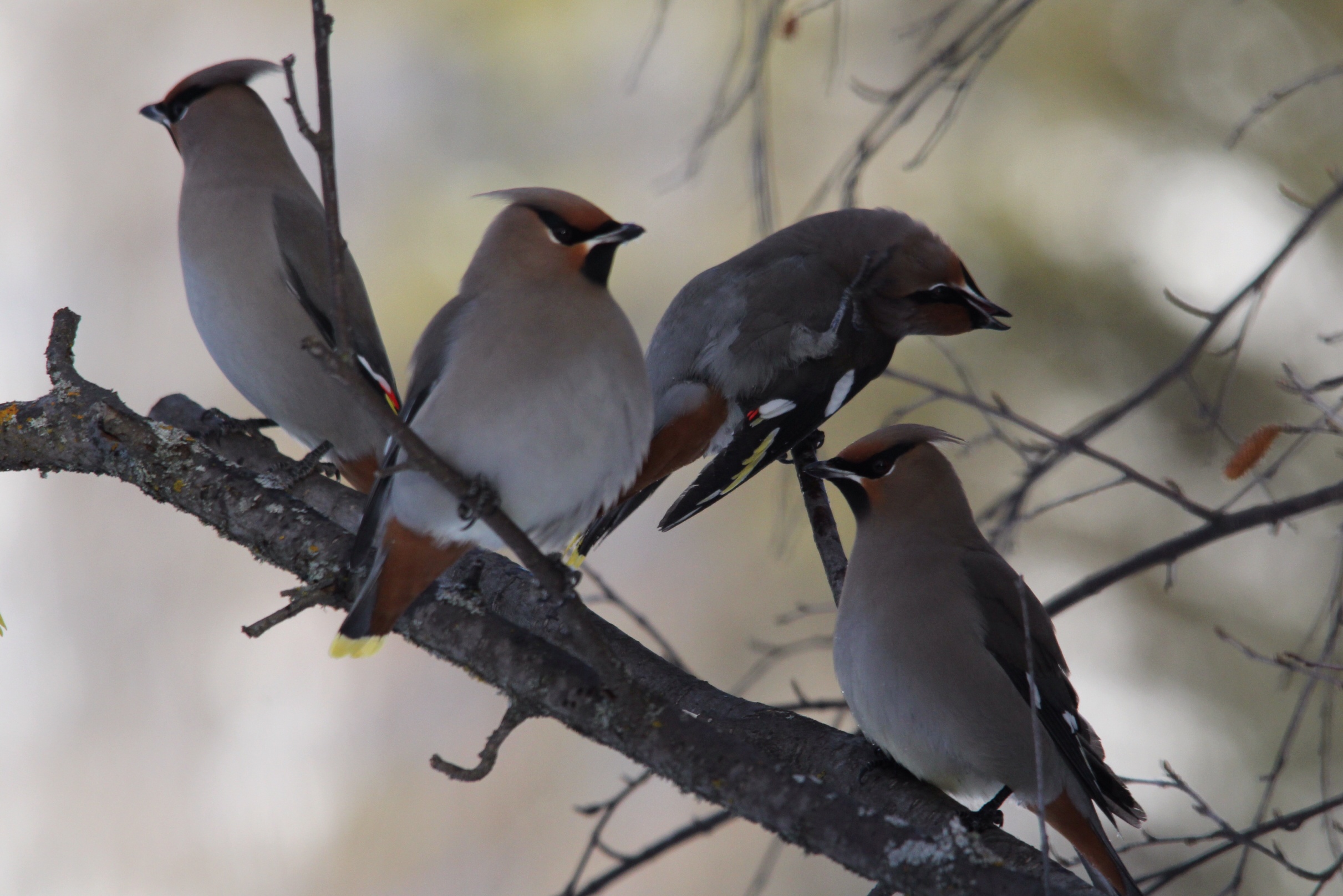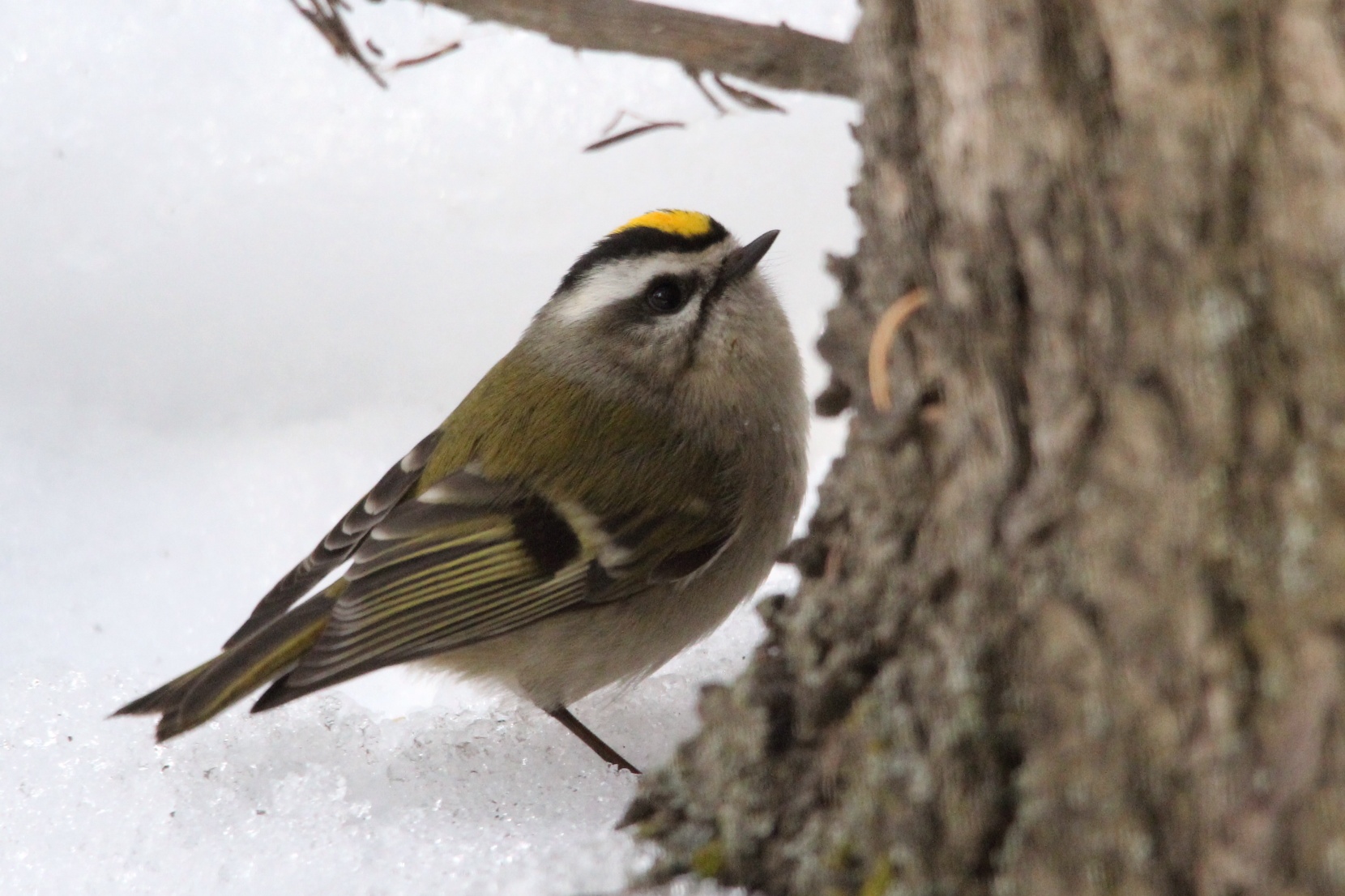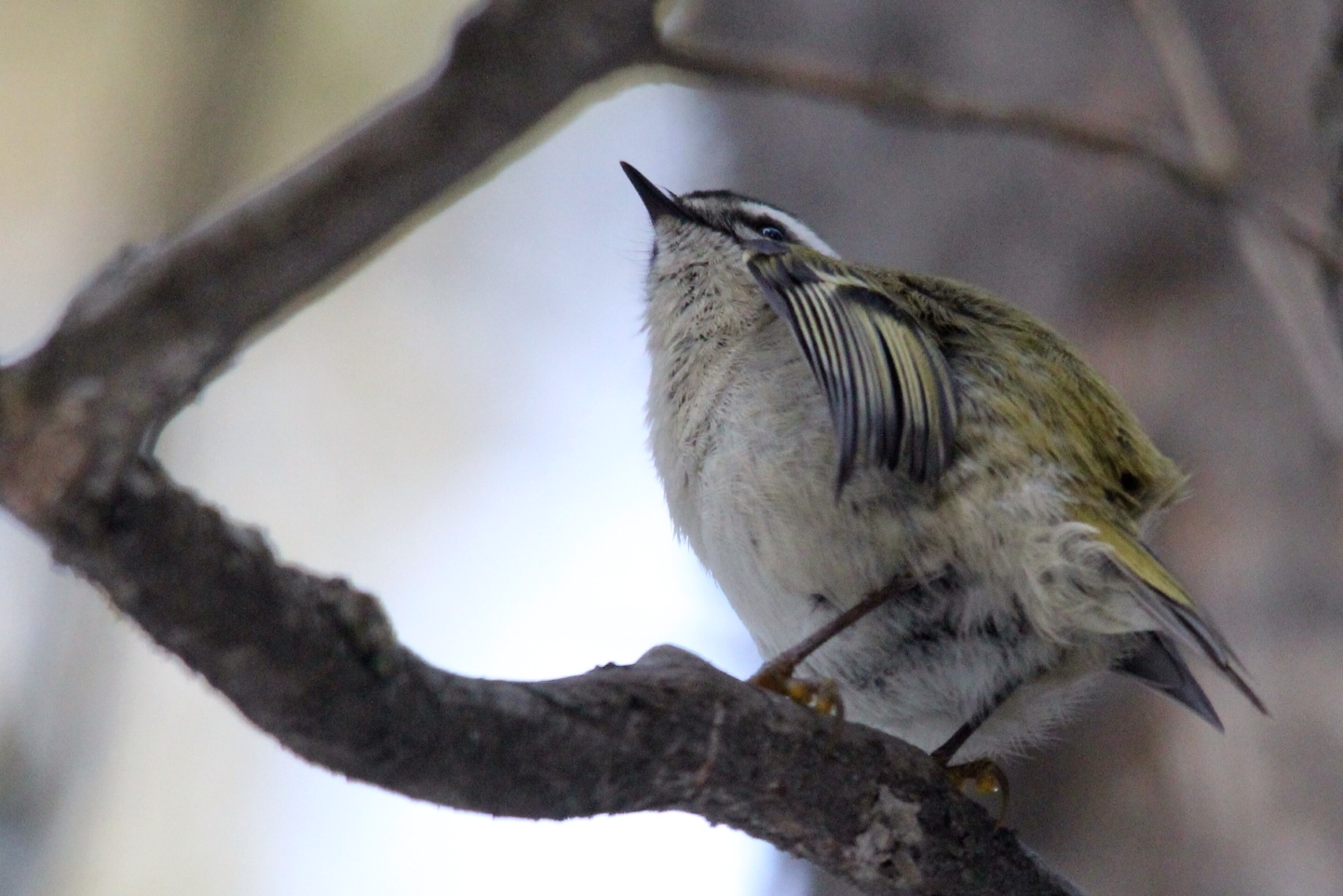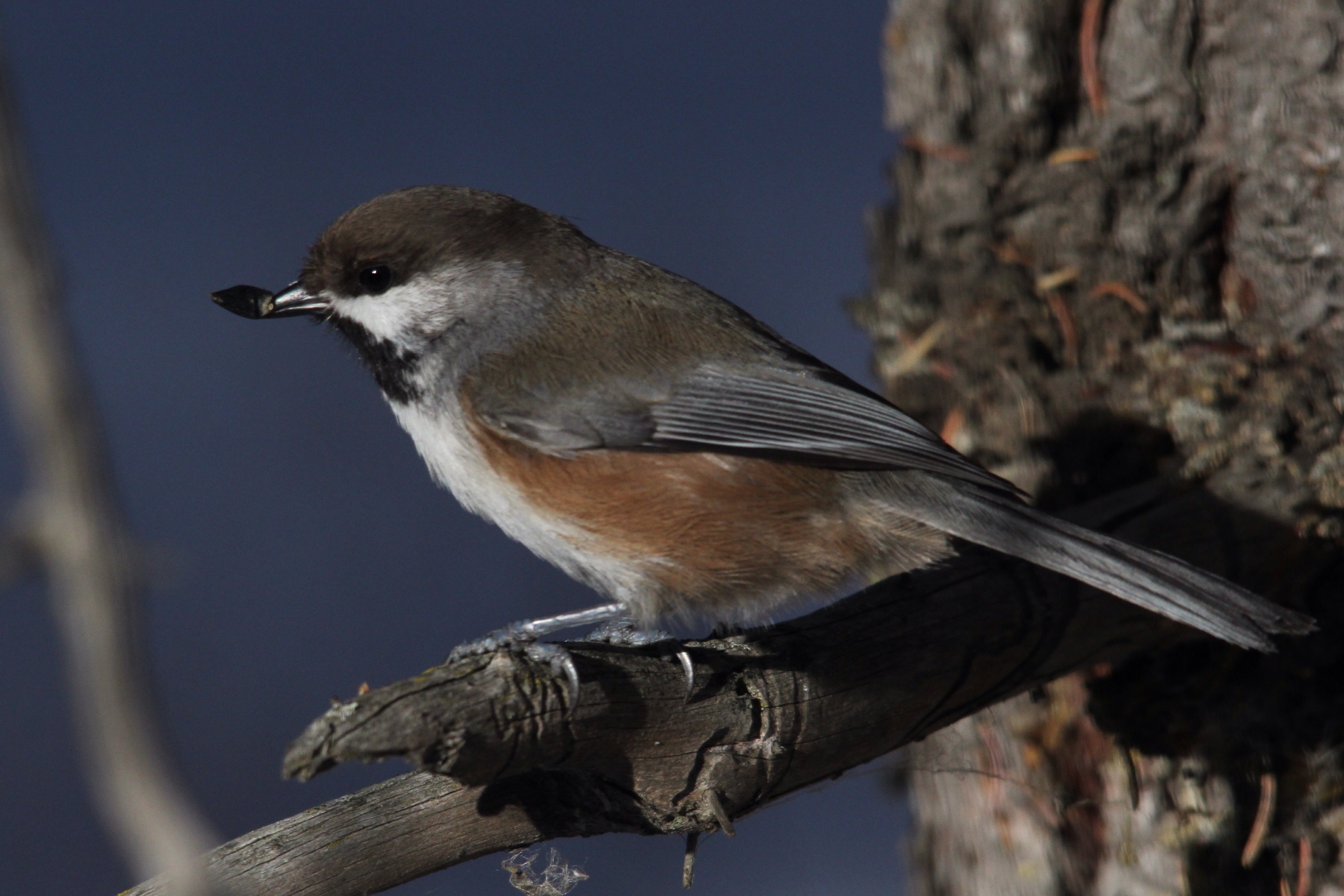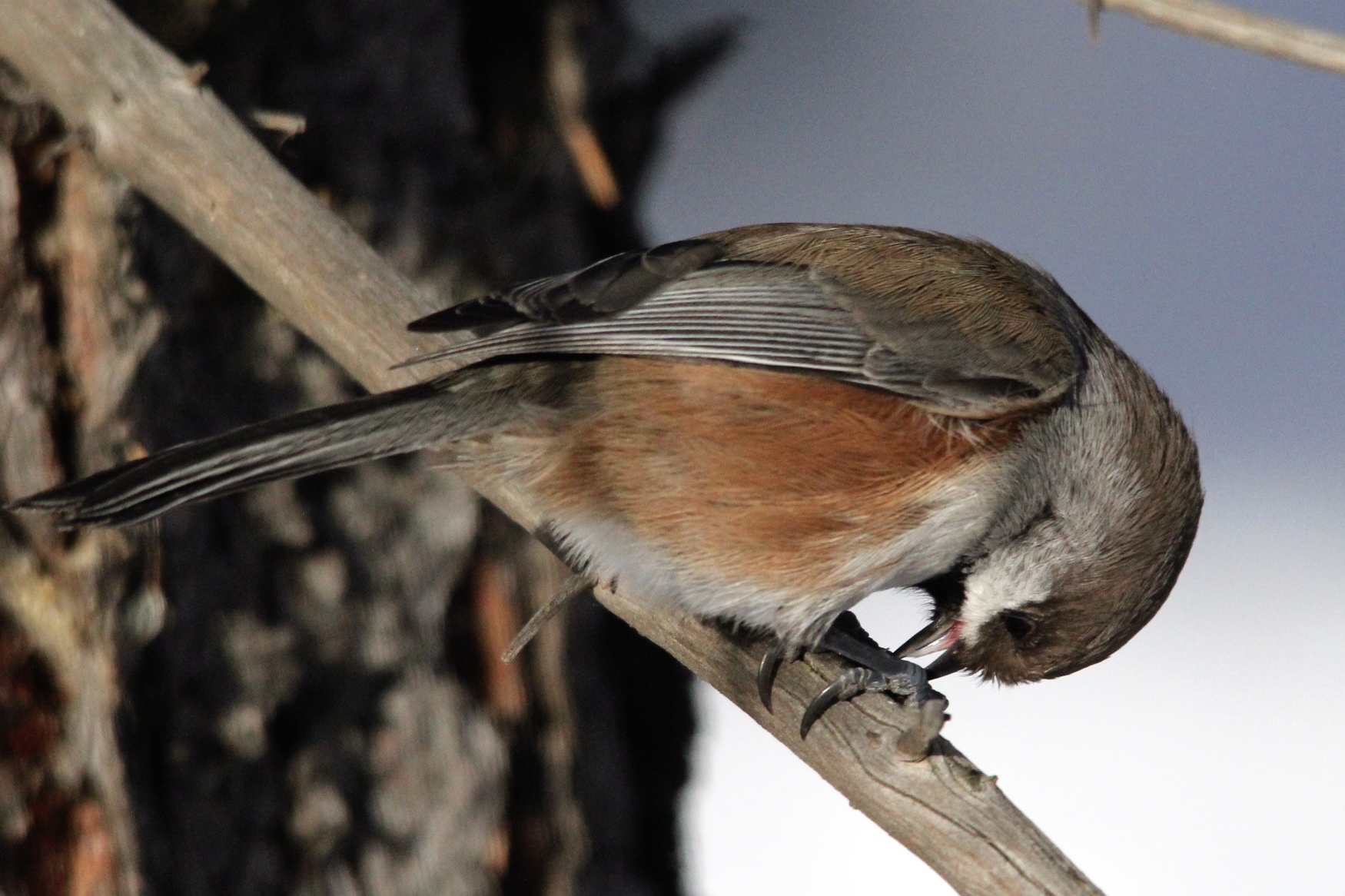Posted by Bob Lefebvre
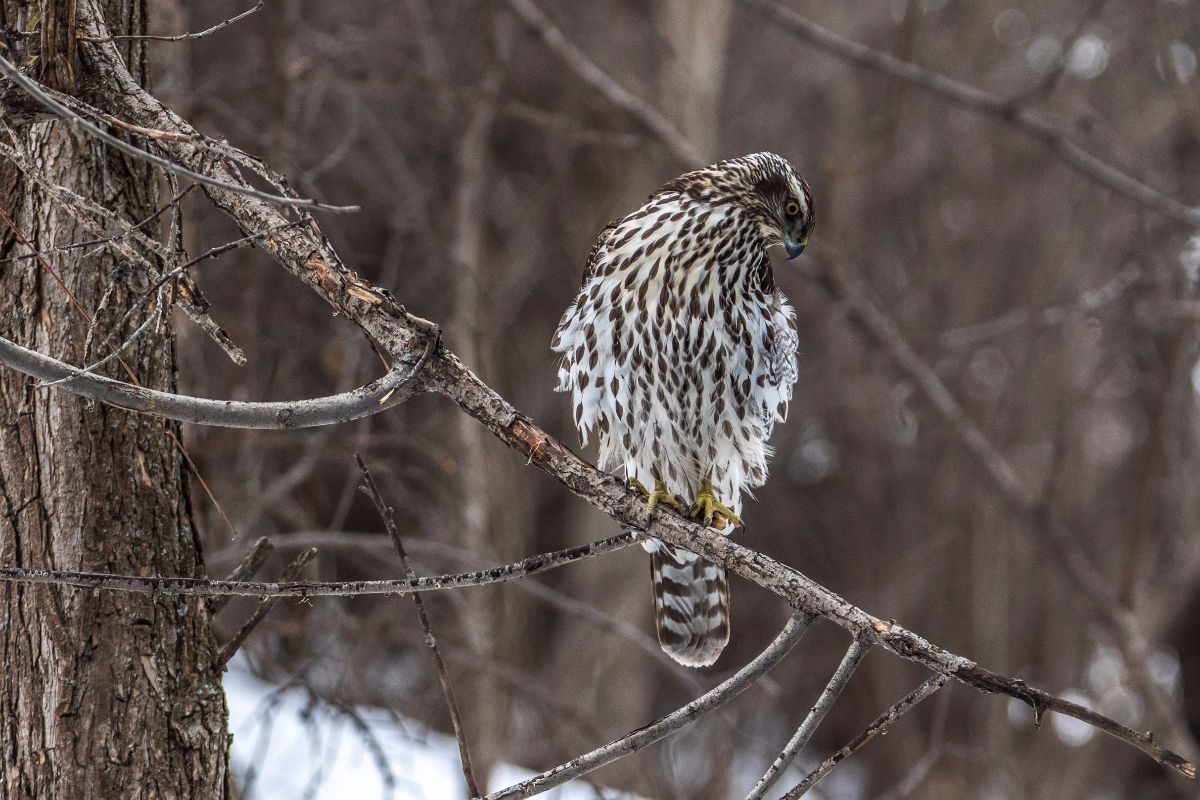
Northern Goshawk, Queen’s Park Cemetery, January 28, 2017. All photos by Tony LePrieur, all taken at Queen’s Park Cemetery..
One of the smaller and perhaps underappreciated birding locations in Calgary is Queen’s Park Cemetery, located just northwest of Confederation Park near 4th Street and 40 Avenue NW.
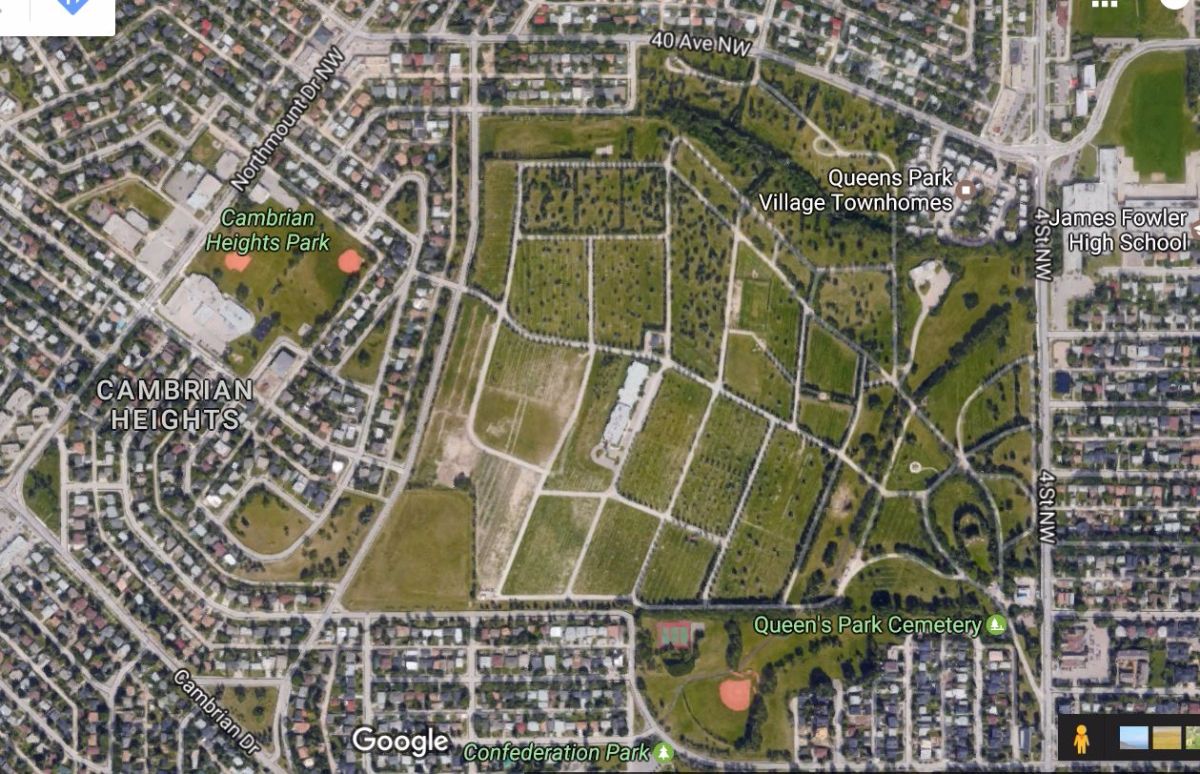
Queen’s Park Cemetery.
The cemetery contains a great number of spruce trees, so it attracts many of the species that prefer to feed in or on those trees, such as the winter finches. Many other species of birds and mammals can also be found there, due to the presence of a creek which stays open year-round. The creek runs along the north end, and is bordered by the thickest growth of trees in the cemetery, both coniferous and deciduous.
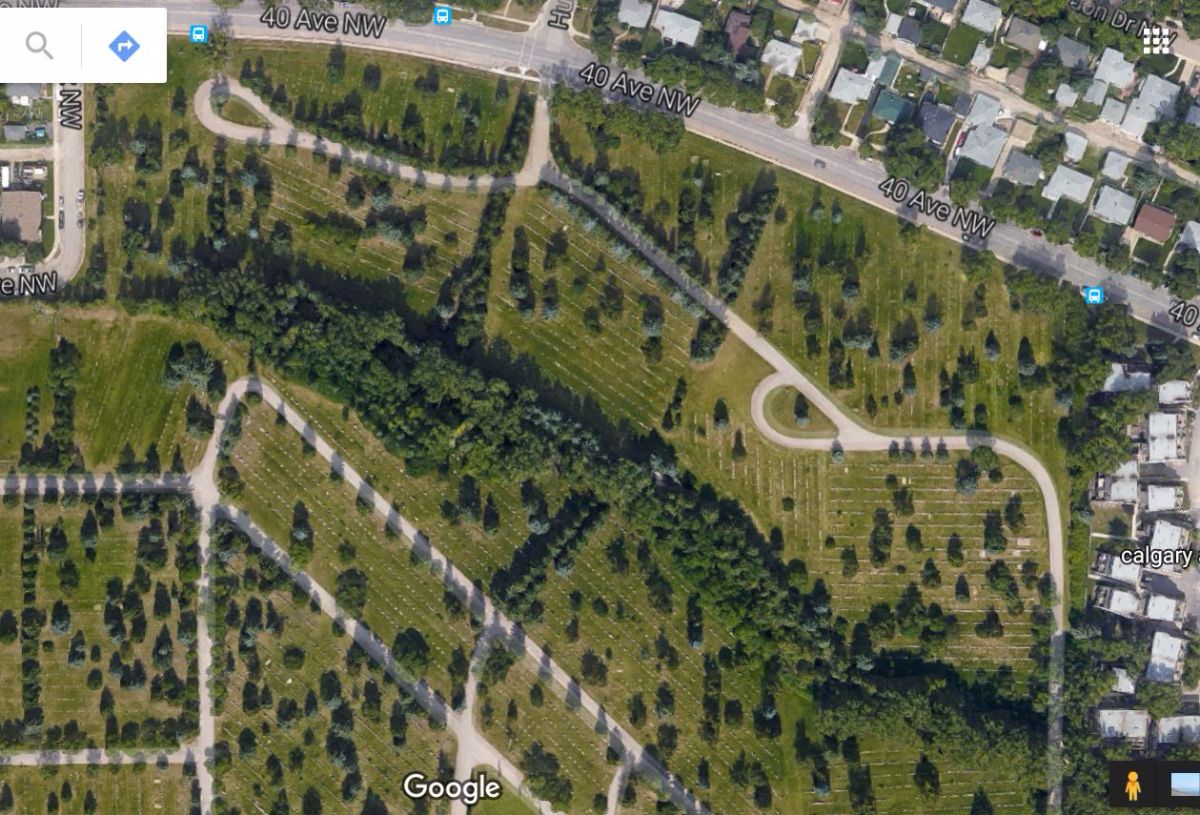
Detail, north end of Queen’s Park Cemetery, showing the trees which border the creek.
Within the cemetery parking is limited, and it is best to park outside and walk in, or pull completely off one of the roads to park while allowing other vehicles room to pass. Stay away from funeral processions and ceremonies, of course.
The best birding tends to be where the trees are thickest, though you can find Black-capped Chickadees and Red-Breasted Nuthatches wherever there are trees. Crossbills also tend to move around the park (and into the surrounding neighbourhoods). In some years, Brown Creepers and Golden-crowned Kinglets are very common. A stroll along the roads can usually turn up a few of these in the winter.
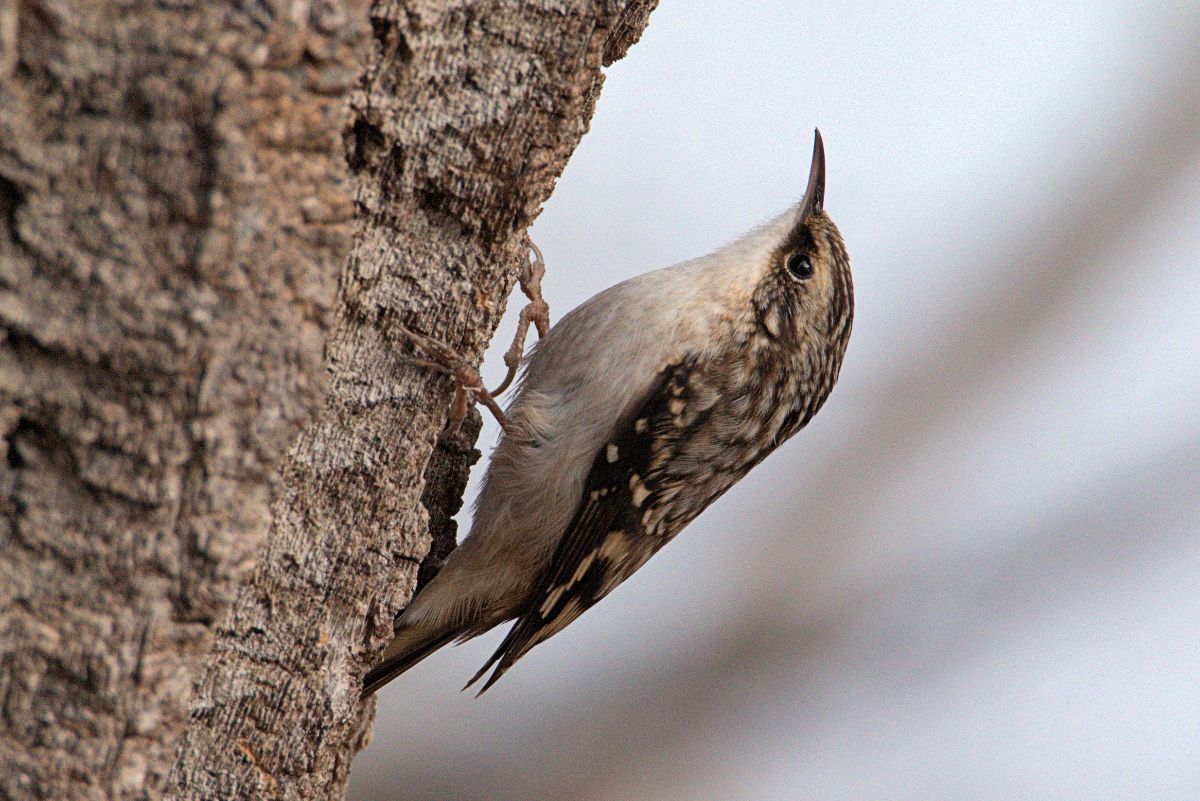
Brown Creeper, November 15, 2015.
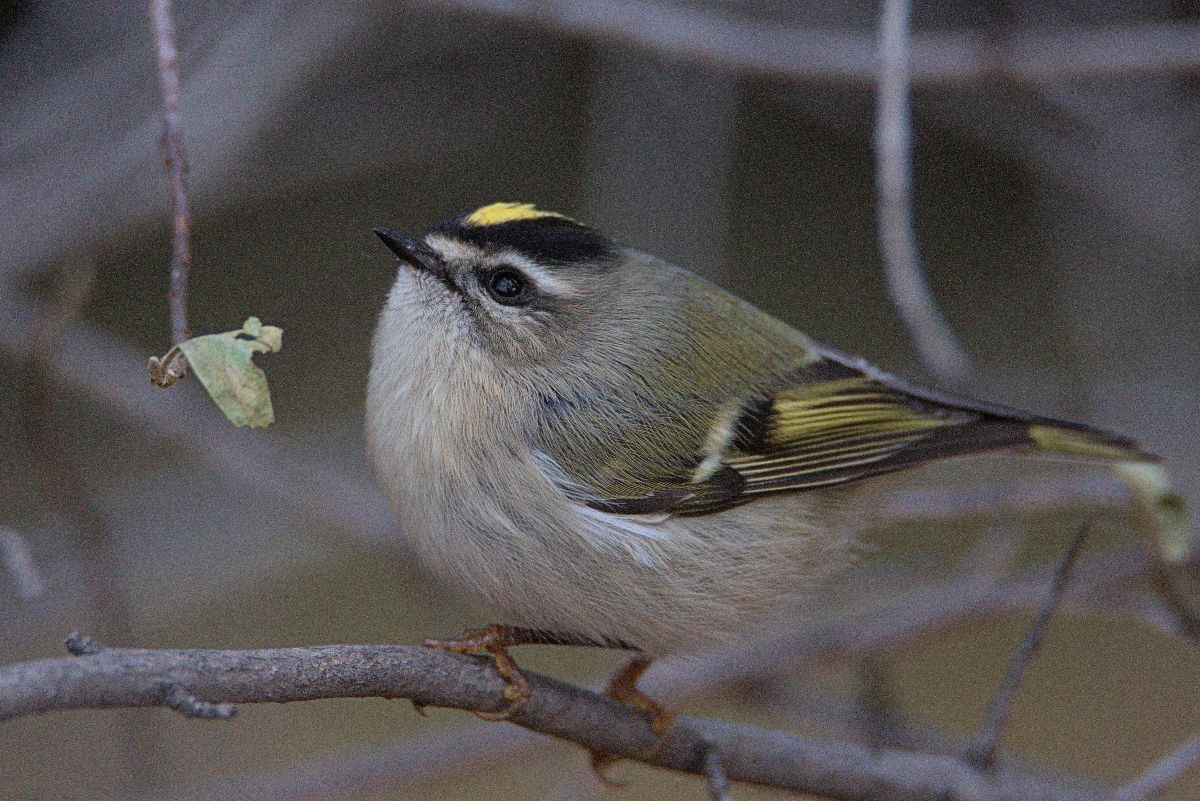
Golden-crowned Kinglet, November 1, 2015.
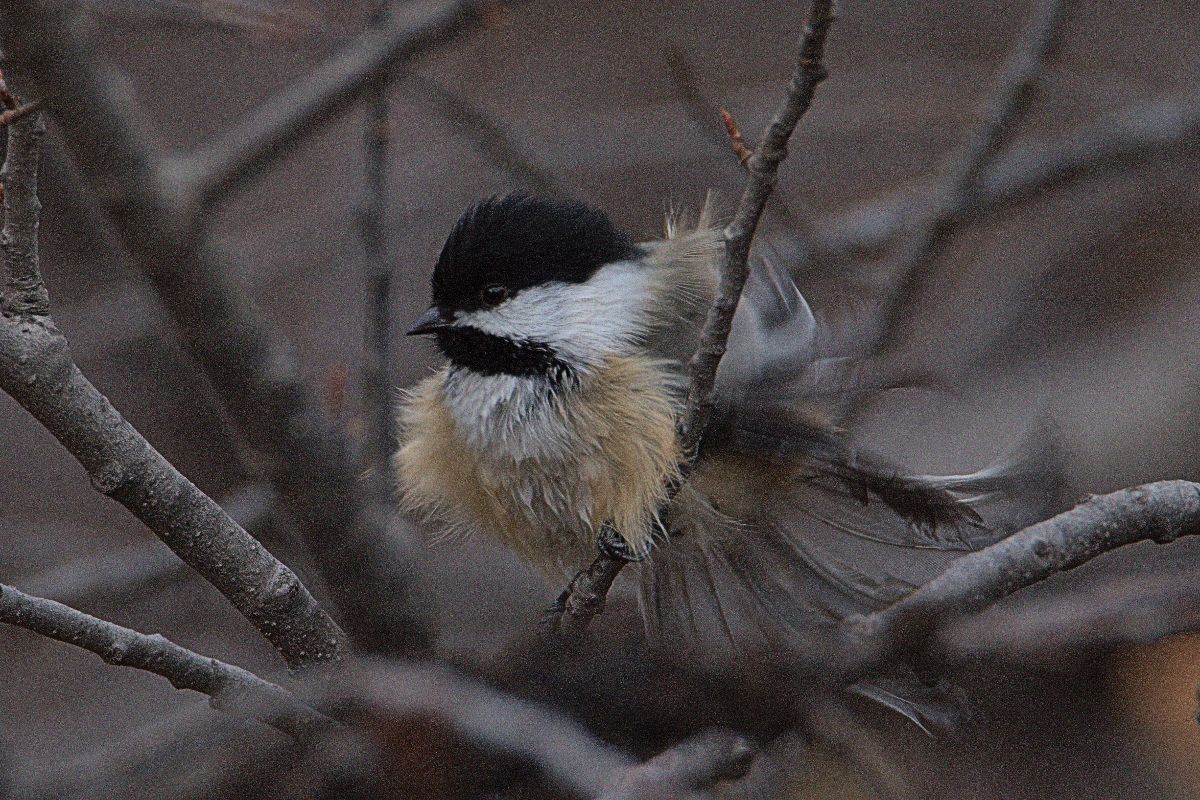
Black-capped Chickadee, November 1, 2015.
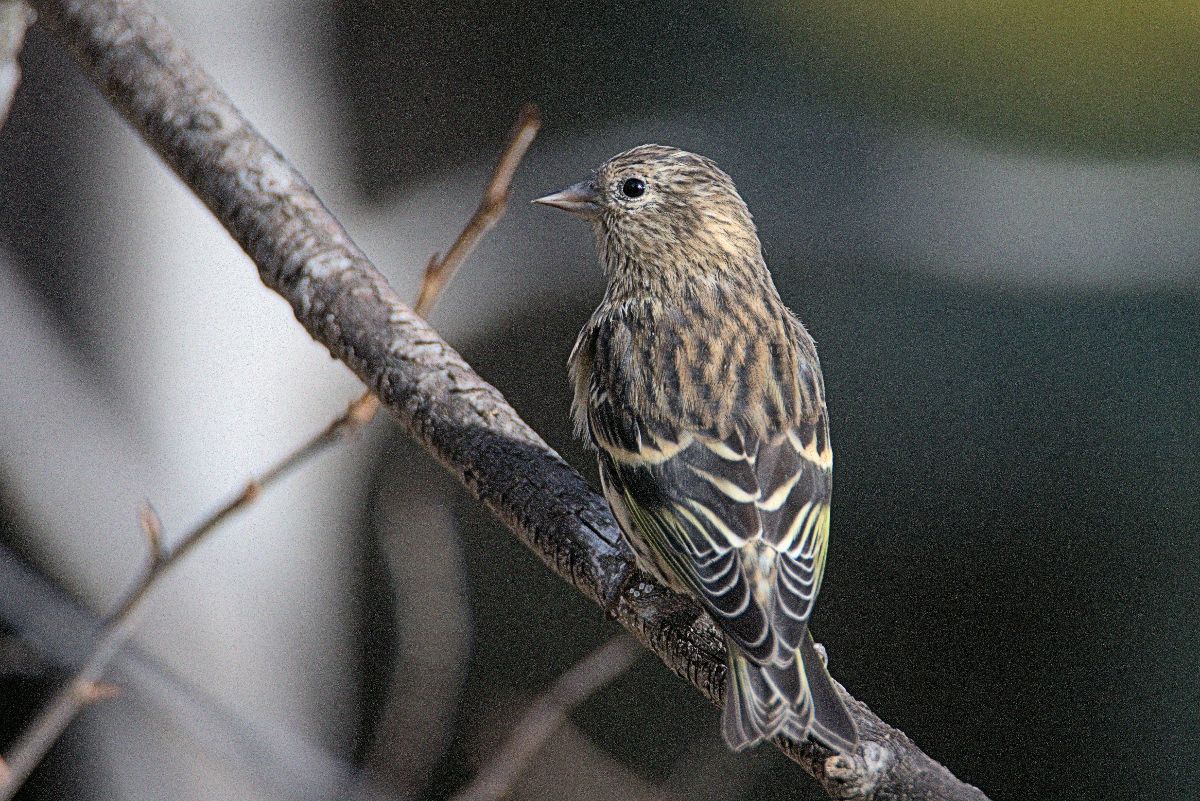
Pine Siskin, October 25, 2015.
The water that flows through the north end draws many birds to drink, feed, and bathe.

Sharp-shinned Hawk, January 15, 2017.

Sharp-shinned Hawk, January 15, 2017.

Another Sharp-shinned Hawk (or the same one from ten months before?), March 6, 2016.

Sharp-shinned Hawk, March 6, 2016.
Queen’s Park is one of the best places to find crossbills. This year there are few in the city, but White-winged Crossbills have been reported there recently.
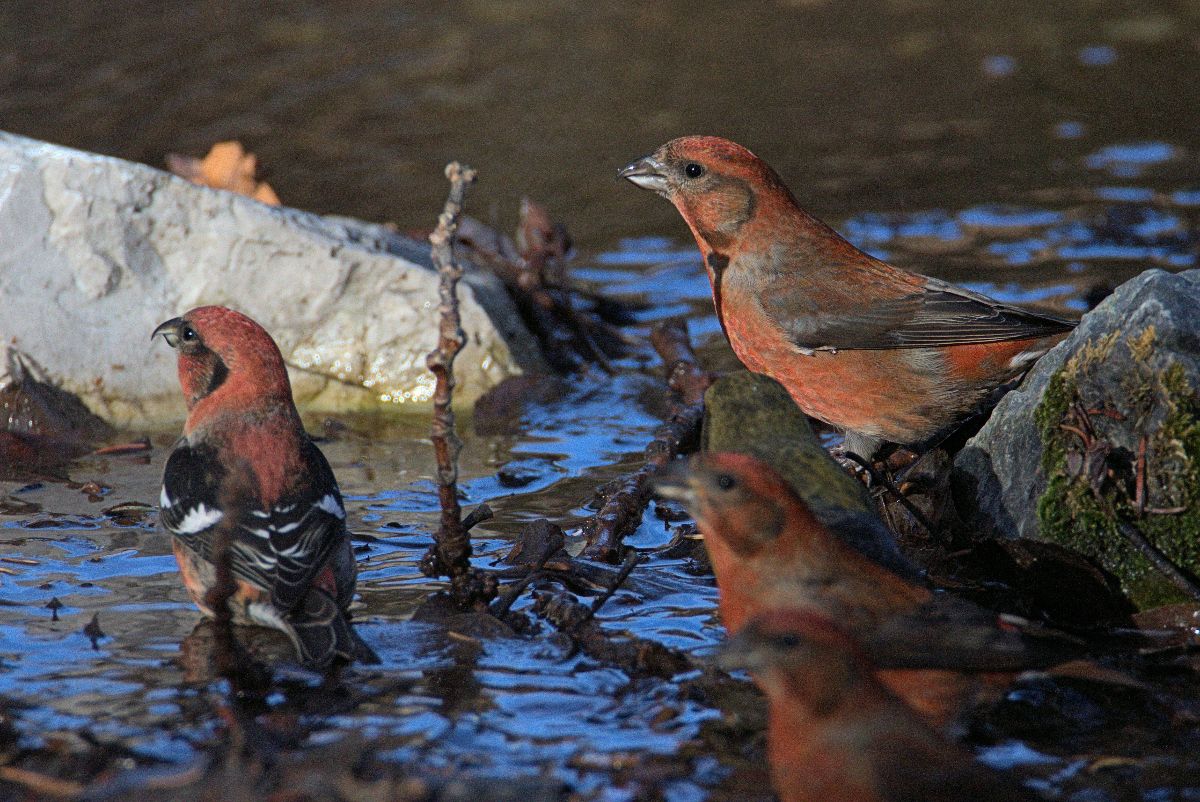
White-winged (left) and Red Crossbills, November 15, 2015.
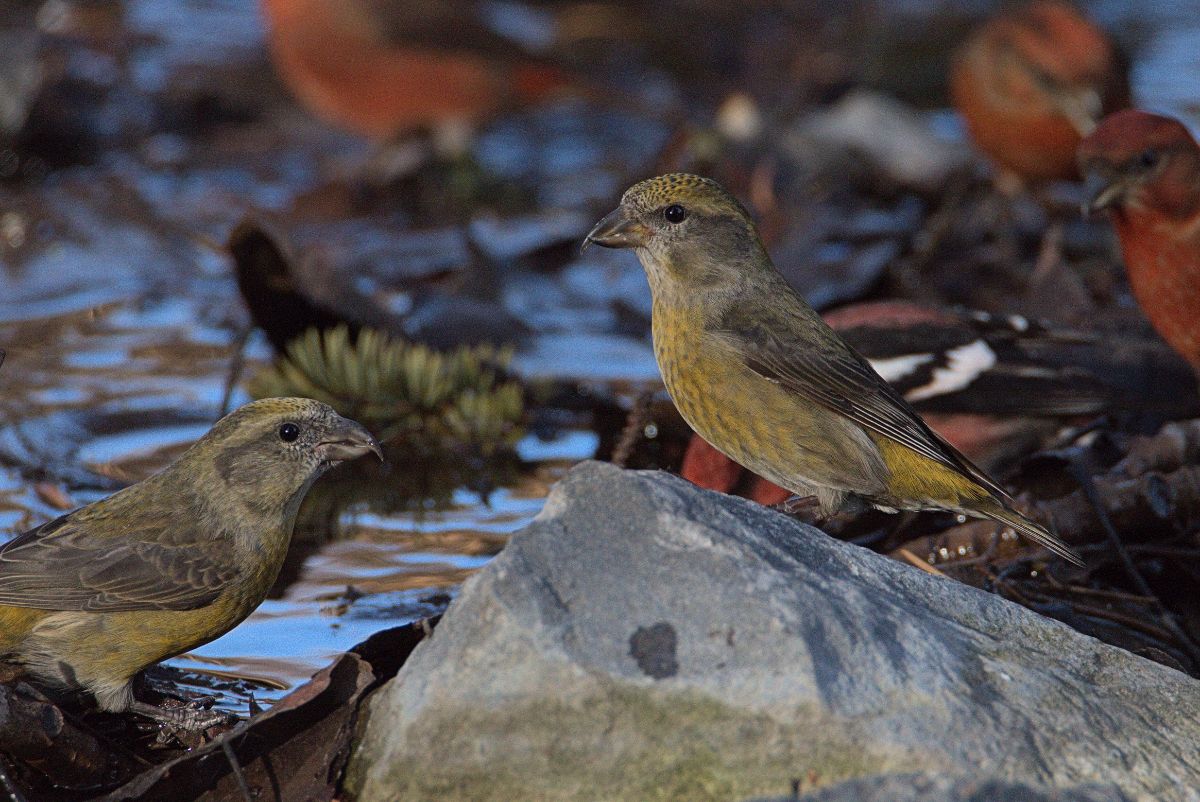
Also November 15, 2015.
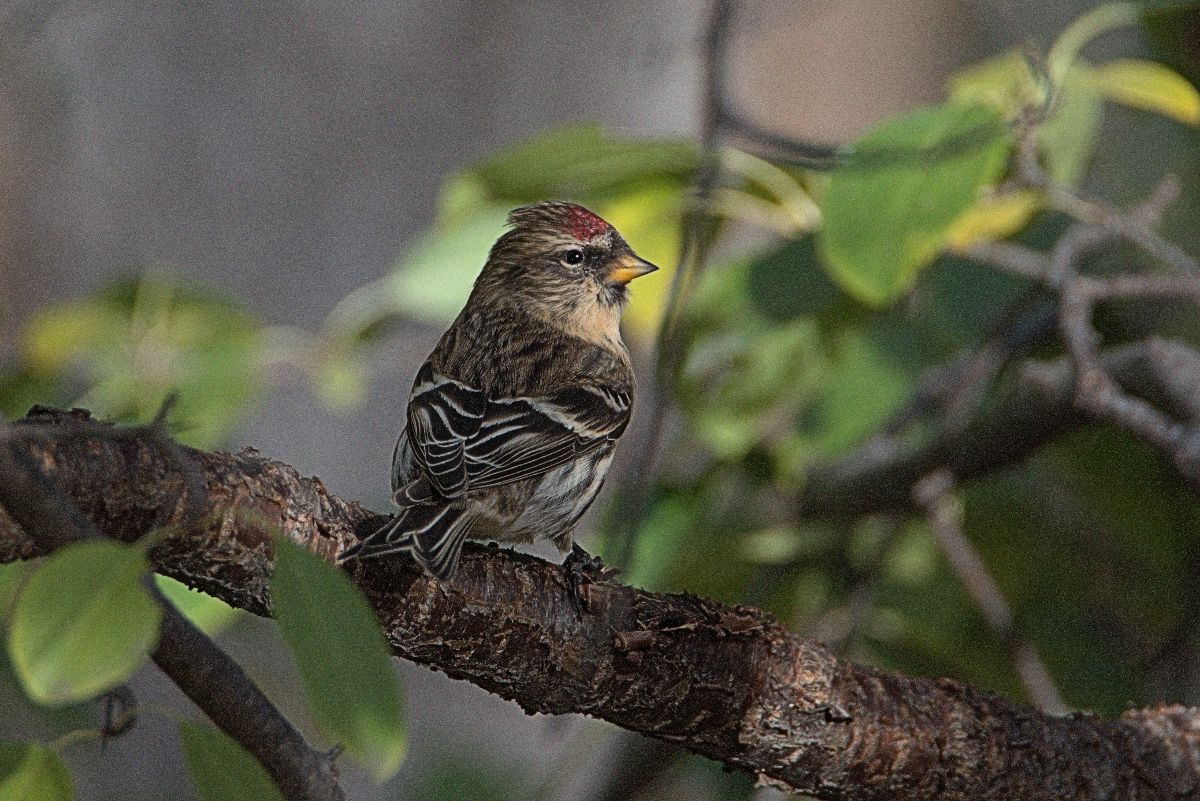
Common Redpoll, October 25, 2015.
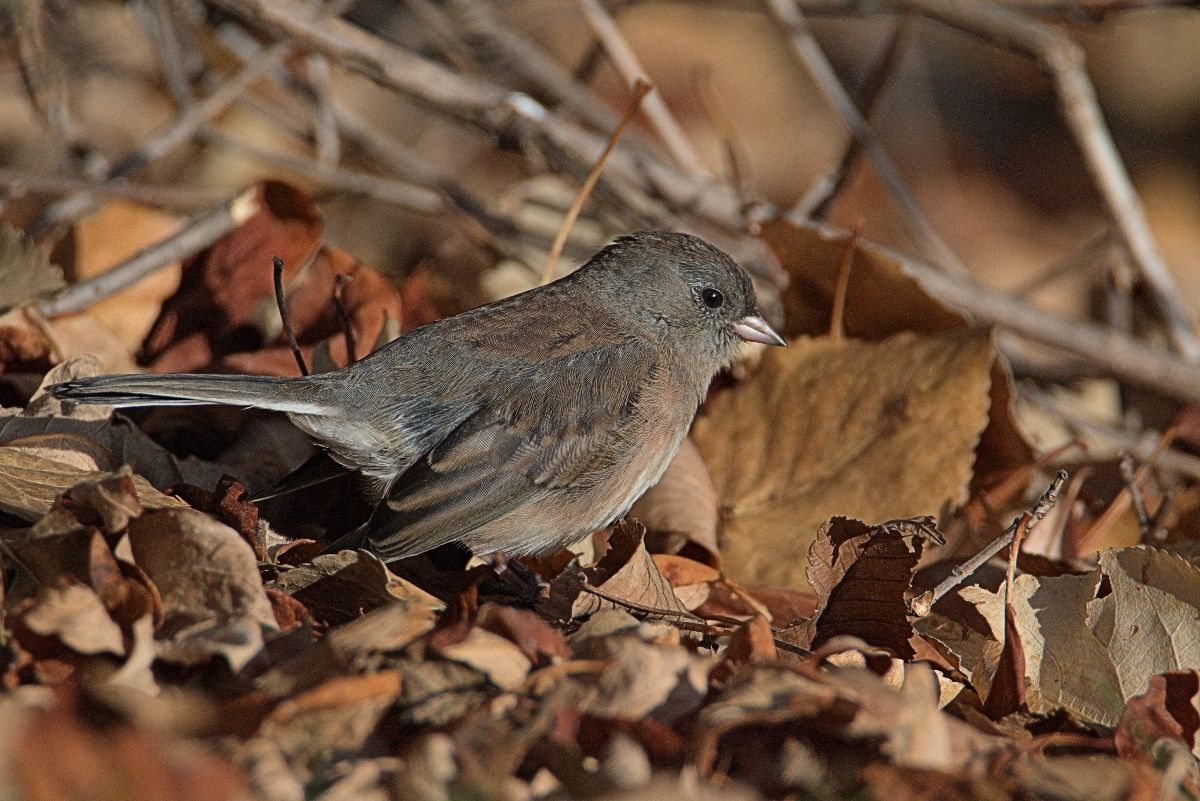
Dark-eyed Junco, October 25, 2015.
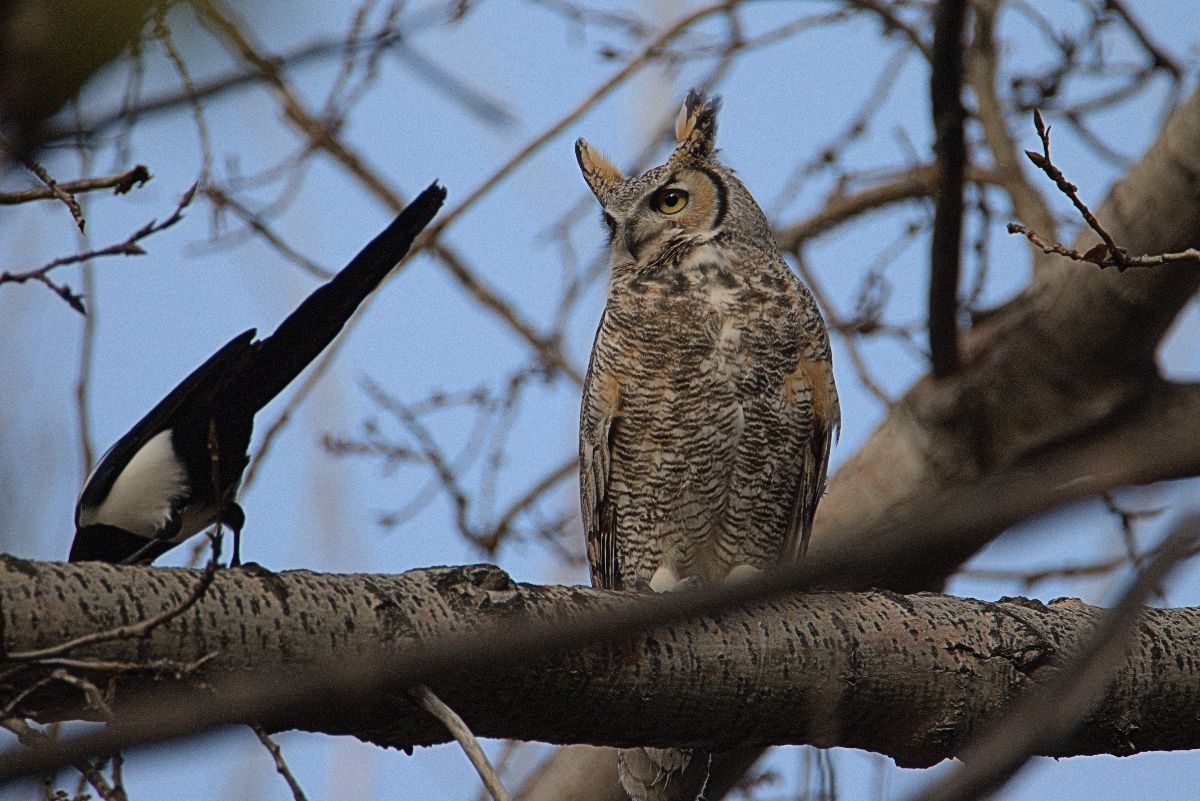
Black-billed Magpie and Great Horned Owl, October 25, 2015.
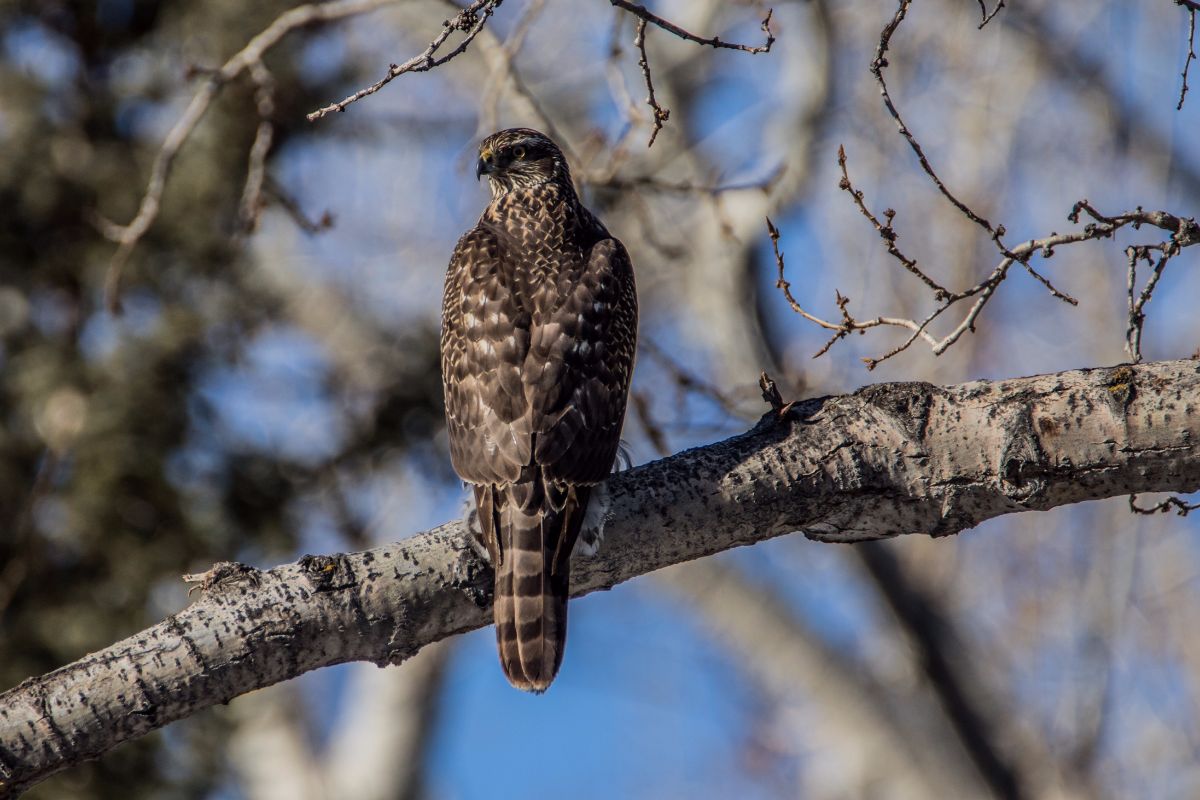
This may be the same young Northern Goshawk as in the first photo, taken a week earlier, January 22, 2017.
Queen’s Park Cemetery is home to several mammal species as well. Coyotes den there, and White-tailed Jackrabbits and Eastern Gray Squirrels are common.
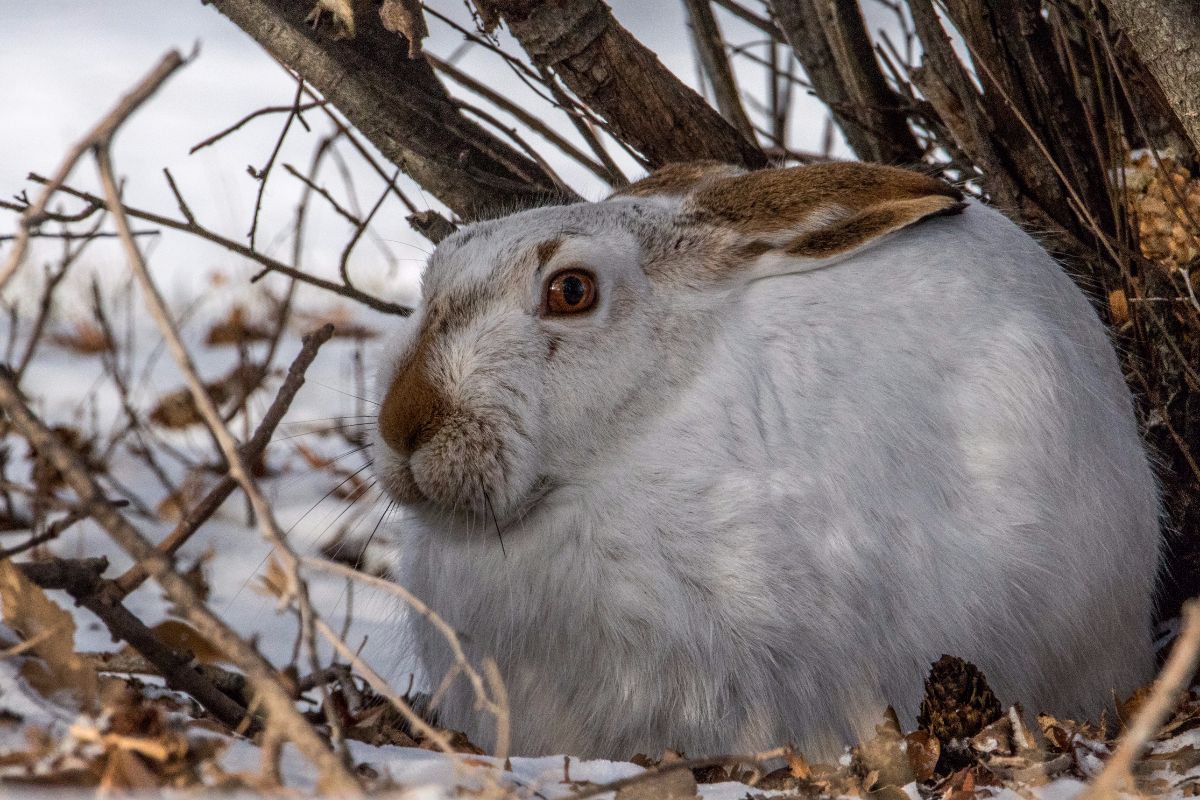
White-tailed Jackrabbit, December 18, 2016.
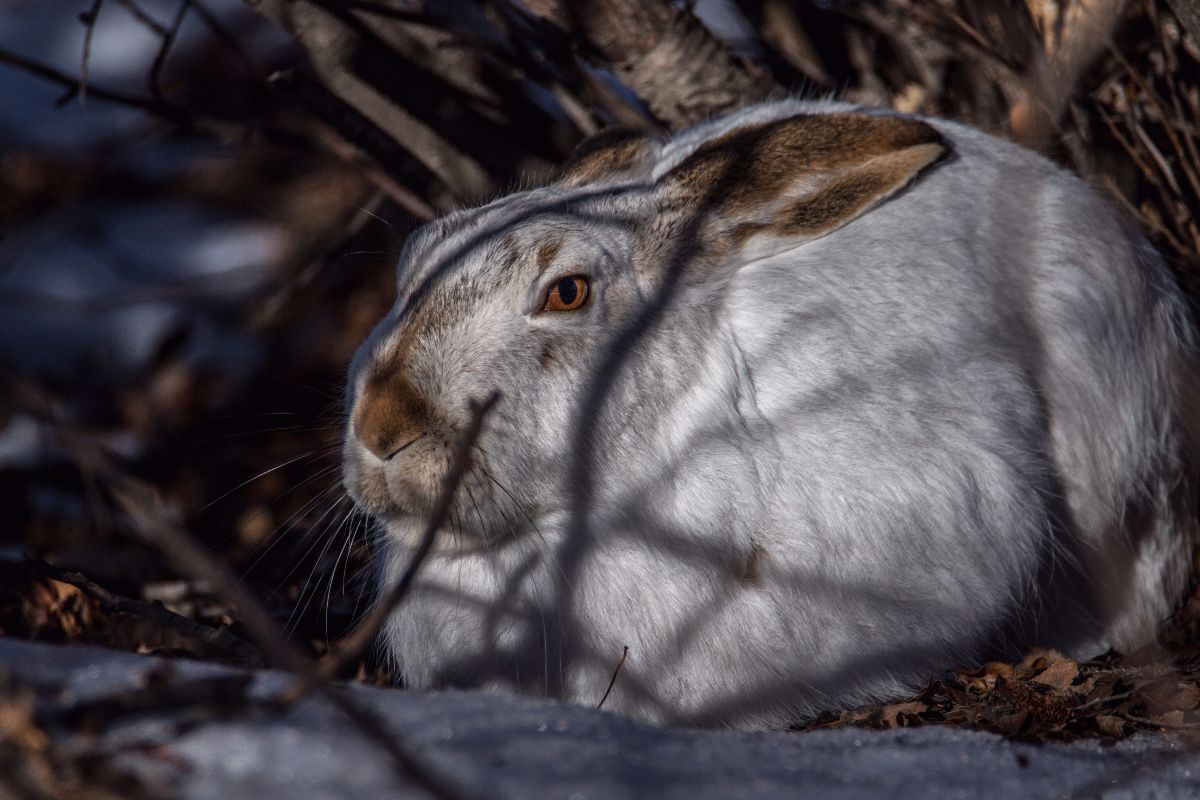
White-tailed Jackrabbit, January 22, 2017.
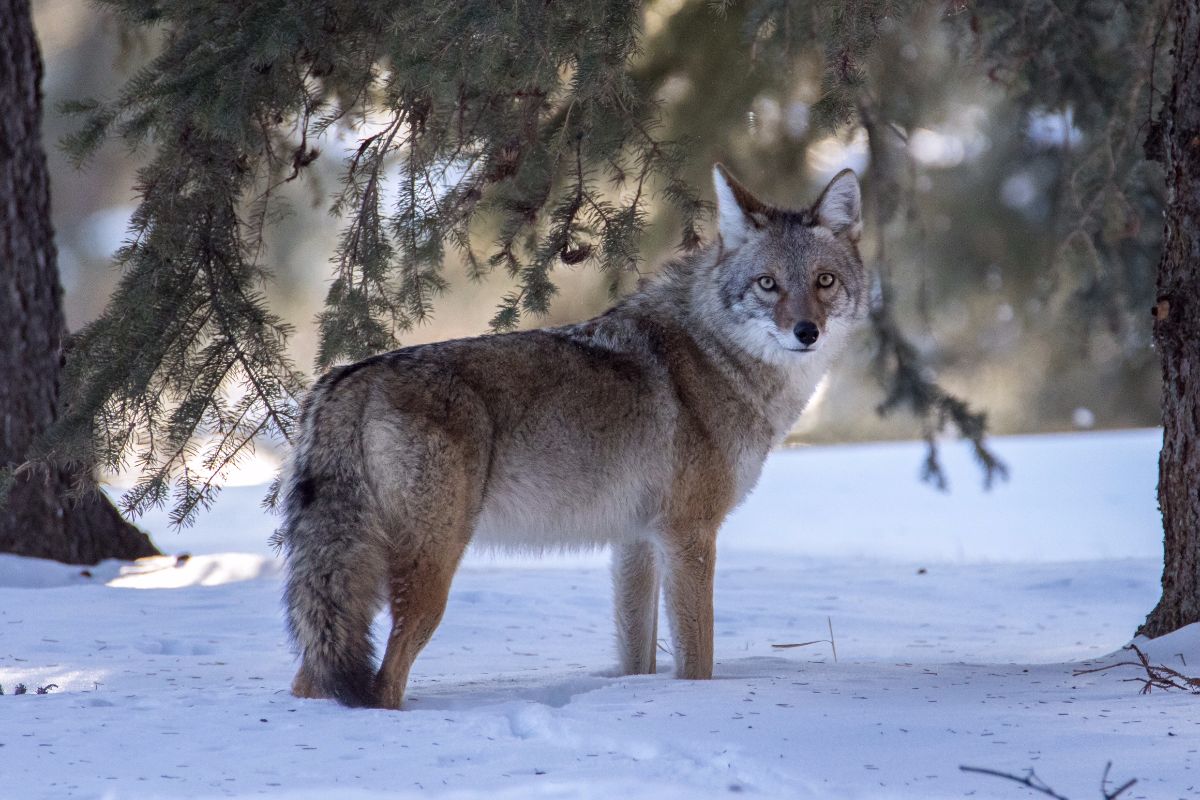
Coyote, January 15, 2017.
So far, eighty-two bird species have been reported here on eBird. That is a pretty good total for a park that isn’t on the river. Sightings in the past week include Rough-legged Hawk, Golden-crowned Kinglet, Brown Creeper, White-winged Crossbill, and Pine Siskin. Get out and add to the total!
